-
History of the sextant 10/29/2024 13:49:10The survey sextant outside the Netherlands 10/29/2024 13:45:42Survey sextants in the Netherlands 10/29/2024 13:42:13History of the sextantPosted by Huibert-Jan Lekkerkerk 10/29/2024 13:49:10 Home , Instruments Comments 158
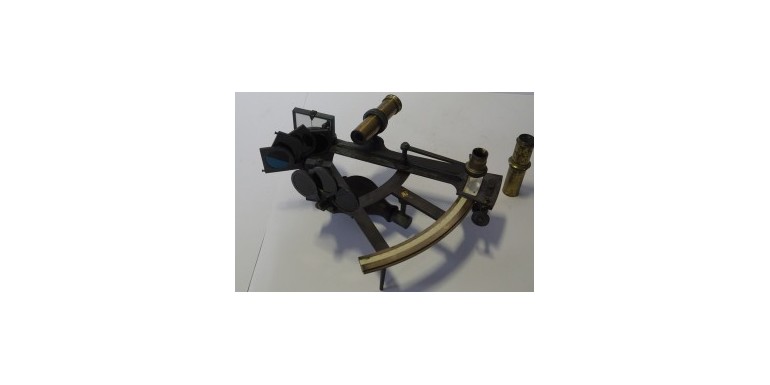
The history of the sextant started in the 17th century and was developed from instruments such as the cross-staff and the Davis quadrant or backstaff. However, these instruments did not use reflection with the exception of the Spiegelboogh of Joost van Breen’s from around 1660 [1] and Hooke’s ‘reflecting instrument’ from 1666 [2]. Both instruments used a single reflection rather than a double reflection. The first double reflection instrument was invented by Sir Isaac Newton (1642-1727) who presented his design in 1699 to the Royal Society [3]. The documentation on this invention was, however, misplaced by its then secretary, Sir Edmond Halley, and only found again 1743 [4].
Godfrey and Hadley
Until 1730 there was hardly any development. In that year in the United States (then a British colony) an instrument based on double reflection and invented by Thomas Godfrey (1704-1749) was tested [5]. In 1731 the Royal Society gave a description of two instruments based on double reflection, developed by John Hadley (1682-1744) [6]. The first instruments by Hadley and Godfrey were similar in design and operation to that developed earlier by Newton. Both deviate from the ‘modern’ sextant in that they have the mirror and index arm parallel. The second instrument as invented by Hadley, is similar to the modern sextant with an index arm at right angles to the telescope. From that perspective it seems defendable that Hadley is the inventor of the modern sextant even though Godfrey and Newton invented an instrument based on double reflection before his invention.
Hadley’s second instrument became known as ‘Hadley’s quadrant’ and had a sector of 45°. Hadley himself referred to this instrument as an octant [7] which is correct as it can measure angles of up to 90° [8]. Hadley’s quadrant or octant was primarily used in astronomical positioning as a replacement to the Backstaff or Davis quadrant and thus for determining the latitude.
Reflection circle
In order to measure the longitude, two methods were under development at that time. One was the chronometer by John Harris, the other the lunar distance method. Both were based on the determination of the exact time of a location in relation to a standard time (at Greenwich for the British). Although there is some argumentation that both methods were competing this is not true. The chronometer is an excellent instrument to measure change in time. The lunar distance method was an excellent method to determine absolute time after a series of measurements and tedious computations. The two methods therefore support each other with the lunar distance method determining an absolute time difference and the chronometer keeping it (for some time). In the lunar distance method the angle between the moon and another heavenly body is determined requiring both the theoretical angular distance as well as an actual measurement of the same distance. When Tobias Mayer developed accurate tables for computing the angular distance and from those the longitude it was quickly found that for the actual measurement the octant with its 90° of arc was unsuitable. Tobias Mayer developed a repeating circle to overcome this problem.
The instrument works along the same principles as the sextant but uses a full circle rather than a 90° sector. Tobias Mayer’s design from 1754 [9] was constructed in 1757 by renowned instrument maker John Bird in 1757 as a reflecting circle with a radius of 16” (around 40 cm)5. The instrument was tested by (later admiral) John Campbell at sea and found to be unwieldy. At his request John Bird created a brass sextant of 120° in 1759 [10]. This instrument was found to be very suitable and the development of the reflecting circle was stopped in England as a result. In France the reflecting circle was further developed by Jean-Charles de Borda and Etienne Lenoir into a definite type in 1777. An instrument that was further developed was the repetition circle by Borda (and Lenoir) for land surveying. As that instrument does not use double reflection it is not discussed in this article.
From vernier to drum
Both the brass sextant and wooden octant remained largely unchanged until the early 20th century. The instruments had different types of frames, including the famous 'double frame' of Troughton and Simms, and the scales would be made of various materials. The least expensive instruments kept their bone / ivory scales whereas the more expensive instruments would go from brass through silver to platinum scales. But they invariably used vernier scales with a tangent screw. At the end of the 19th century the regular tangent screw with a limited movement would be replaced by the endless tangent screw allowing easier small adjustments using a toothed index scale. Fine reading was still done through a vernier set-up though. Around 1907 C. Plath [11] developed the first drum micrometer sextant. With this design the teeth of the index scale were cut to such an accuracy that the rotation of the worm indicated exactly 1 degree. The division of the degree would now be read directly on a drum fitted to the worm screw. In some sextants the drum would be augmented by a small vernier allowing even finer readings.
Towards the end
The drum was essentially the last invention of the sextant to reach production. Over the years variations on the sextant were created but all used essentially the same set-up. The only real exception was the Freiberger Skalen sextant [12] which used a moving glass index rather than a brass one. One of the last developments was the Observator Mk IV [13] with the filters fitted inside the telescope allowing a gradual change of the filter. However, this was still evolution rather than revolution. The real revolution was to come from the digital sextant with a computer for performing the calculation from astronomical sight to position. A number of prototypes [14] were developed and one seems to have found its way into production [15] but in general the sextant has been all but replaced by GNSS positioning. The main use for the, usually still traditional drum, sextant is with yacht owners wishing a back-up in case of a power failure.
Sources
- [1] Nicolas de Hilster, Navigation on Wood, 2018, p. 312 ff.
- [2] Charles H. Cotter, A history of the navigator's sextant, 1983, p. 104
- [3] Charles H. Cotter, A history of the navigator's sextant, 1983, p. 106
- [4] Bruce Bauer, The sextant handbook, 1992, p. 28
- [5] Charles H. Cotter, A history of the navigator's sextant, 1983, p. 122 ff.
- [6] Charles H. Cotter, A history of the navigator's sextant, 1983, p. 111 ff. and Peter Ifland, Taking the stars, 1998, p. 15 ff.
- [7] John Hadley, The description of a new instrument for taking angles, 1731
- [8] W.F.J. Mörzer Bruyns, Schip recht door zee, 2003, p. 28 ff.
- [9] Charles H. Cotter, A history of the navigator's sextant, 1983, p. 144 ff.
- [10] Peter Ifland, Taking the stars, 1998
- [11] Bill Morris, C Plath Sextants | The Nautical Sextant (sextantbook.com)
- [12] Bill Morris, Freiberger Skalen Sextant | The Nautical Sextant (sextantbook.com)
- [13] Bill Morris, The Observator Mark 4 sextant | The Nautical Sextant (sextantbook.com)
- [14] Royal Museum Greenwich, Digital Sextant | Royal Museums Greenwich (rmg.co.uk)
- [15] Korea Digital Sextant Korea Digital Sextant (kdigitalsextant.com)
Related Products
Leave a Reply





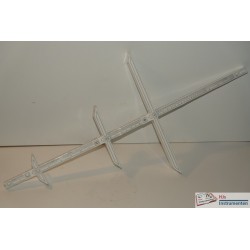
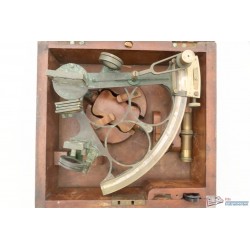
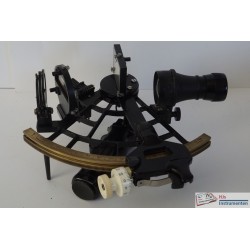
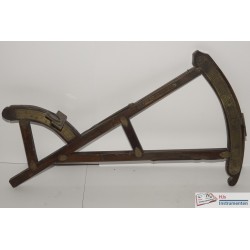

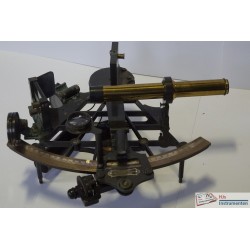
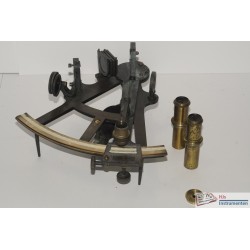
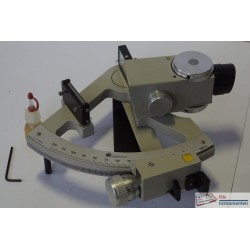
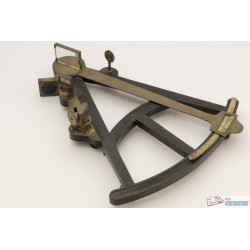
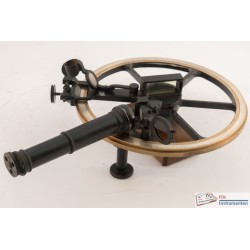
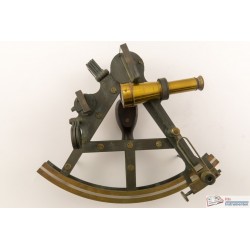
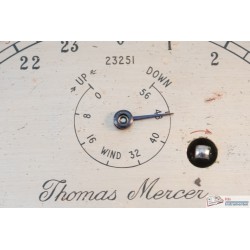
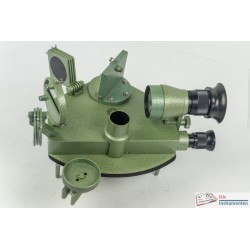
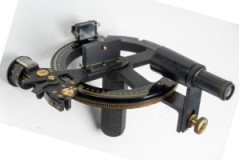
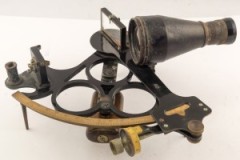
158 Comments
I just could not depart your web site prior to suggesting that I actually enjoyed the standard information an idividual supply for your visitors?Is gonna be again regularly in orderr to check up on new postsMy page; https://Www.Cdlcruzdasalmas.com.br/portal_de_empregos/companies/22bit-22bit-casino25/
Guide To Car Door Lock Repair: The Intermediate Guide The Steps To Car Door Lock Repair Car door lock repair
私は、オンラインカジノ「テッドベット」の長年のプレイヤーとして日々研究しています。私の記事を通して、初心者向けの始め方を詳しく解説します。私の目的は、あなたがテッドベットで最高のゲーム体験をするための最適な道しるべとなることです
Mon monde tourne autour des probabilités,des stratégies et de la psychologie du parieur. Je partage mes découvertes pour permettre à tous à mieux cerner les mécanismes du jeu.Feel free to surf to my webpage :: casino
Le Golden Panda Casino est mon terrain d\'expérimentation. J\'y teste des théories pour identifier celles qui marchent véritablement.https://mcmillancoastalproperties.com.au/author/erwinblunt8680/https://www.aplum-inc.com/chashallowell4https://git.riomhaire.com/reubenucq07271https://system.yb-twc.com/git/lljluz08272107https://git.kaizer.cloud/maynardwingatehttps://careerfy.pl/employer/golden-panda-casino-fr/https://bigdatahiring.com/employer/golden-panda-casino-fr/https://alohamar.mx/agentes/mellissadoughe/http://dev.zenith.sh.cn/tabathapalfrey/tabatha2003/-/issues/1https://system.yb-twc.com/git/lljluz08272107
Je vous partage l\'excitation du Golden Panda Casino à travers mes mots.Vibrez avec moi la magie du jackpot.https://git.thetoc.net/alfonzohunterhttps://git.johnen.biz/shaynawhittenhttp://stage.tripee.fr/employer/golden-panda-casino-fr/http://huamonarch.xyz:21116/billyheyne6304/6043golden-panda-casino/wiki/Golden-Panda-Casino%3A-A-Glimpse-into-the-Dawn-of-Macau%27s-Gaming-Empirehttp://39.108.209.179:3000/piperhardesty/4601952/wiki/Golden-Panda-Casino%3A-A-Deep-Dive-into-its-Rise%2C-Fall%2C-and-Legacyhttps://multiplanet.ae/author/annabellebeaud/https://git.manu.moe/katherinburrelhttp://giteastaraire.vip.cpolar.cn/phjcharmain687https://gitlab-ce.apps.openshift4.positiva.gov.co/darcifrier8781https://git.daoyoucloud.com/mauriciomcquis/golden-panda-casino2004/wiki/Golden-Panda-Casino%3A-A-Deep-Dive-into-Its-History%2C-Offerings%2C-and-Future-Prospects
Ik analyseer de verschillende varianten van klassieke spellen zoals Blackjack en Baccarat.Subtiele regelverschillen kunnen een significante impact hebben op je winstkansen.my page: casino (mouse click the following internet site)
:)My blog post: google
Car Ignition Repair Tools To Ease Your Daily Life Car Ignition Repair Trick That Every Person Must Know Car Ignition Repair
What\'s The Job Market For Car Key Jammed Repair Professionals Like?Car Key Jammed Repair
See What Car Key Blade Repair Tricks The Celebs Are Using Car key blade repair
5 Arguments Keyless Entry Repair Is Actually A Great Thing Vehicle Keyless Entry repair
Car Remote Key Repair Tools To Ease Your Everyday Lifethe Only Car Remote Key Repair Trick That Should Be Used By Everyone Be Able To Car Remote Key Repair
Je me vois comme un journaliste d\'investigation dans le monde du Golden Panda Casino.Je trouve l\'information cruciale qui fait la différence.https://animployment.com/employer/golden-panda-casino-fr/https://git.daoyoucloud.com/mauriciomcquis/golden-panda-casino2004/wiki/Golden-Panda-Casino%3A-A-Deep-Dive-into-Its-History%2C-Offerings%2C-and-Future-Prospectshttps://gitea.dvereb.com/nickolasricherhttps://bantoomusic.com/iris624181651http://charge-gateway.com/christian7283https://rentodook.com/author/matthiascaruso/http://repo.atamiso.com/arlieglenny01/3425golden-panda-casino-fr.com/wiki/Golden+Panda+Casino%3A+A+Deep+Dive+into+Its+History%2C+Evolution%2C+and+Impacthttp://43.139.94.199:8084/audreakeene967http://git.sinoecare.com/coleman28r3659/7993golden-panda-casino-fr.com/issues/1https://tender.procure.am/employer/golden-panda-casino-fr
I scrutinize the mathematics that control every casino outcome.My intent is to teach you how to utilize that knowledge.https://git.agri-sys.com/libbyrvi930946/3032coral-testimonials/wiki/Consider-In-Your-Betting-At-Coral-Skills-However-Never-Cease-Betteringhttps://mbhomes.ae/author/vallienutter95/https://debeaconhomes.com.ng/author/seanbethel764/https://homezy.co.in/author/eleanore13h838/https://103.1.12.176/gregfadden330/4973408/wiki/Security-and-Licensing-at-Betonred-Casinohttp://git.365zuoye.com/nancee14008050https://realpondy.com/author/verlenec14822/https://propi.id/author/melindaworthy/http://git.hjd999.com.cn/leonardo851551http://bertogram.com/jszgabriel1134
My philosophy is simple: gambling should be amusing.In the pursuit for winning strategies and statistical advantages, it\'s easy to lose sight of the primary reason we play. My blog is a celebration of the joy of gaming.I concentrate on how to obtain the highest entertainment value from your time and money.We\'ll explore games with low house edges that allow for longer play sessions. I\'ll share stories that are less about the financial outcome and more about the thrill of the experience and the people I\'ve made along the way.This is a stress-free zone for people who love the casino environment.My hope is to rekindle your passion for the pure, simple fun of the game.http://docker.clhero.fun:3000/salvatoreforna/7610832/wiki/Ten-Methods-Wejd%C5%BA-Do-Bizzo-Could-make-You-Invinciblehttps://git.toot.pt/wandamocatta48/4950995/wiki/Prime+25+Quotes+On+Play+At+Happy+Tigerhttps://git.simbarbet.com/porternunez21https://realhnt.com/author/dallasbuttrose/https://gitea.reimann.ee/indiraelwell0/1bet4win-online.com3058/wiki/Metodi-di-Pagamento%3A-Gestire-i-Vostri-Fondi-su-1bet4win-casino (please click the following webpage)https://onummah.com/@hamishbobadill?page=abouthttp://45.45.238.98:3000/gloriagranadoshttps://gitea.mskbo.keenetic.name/elaineboyd118/elaine1989/wiki/Blast-Off-to-Big-Wins%3A-A-Deep-Dive-into-the-Astronaut-Crash-Gamehttps://propertyfied.com/author/vilmaakers3369/https://lab.chocomart.kz/jeanniemaye16/8191como-jogar-cash-mania/issues/1
My title is synonymous with high-stakes action and the VIP experience.I report from the exclusive world of high rollers, private rooms, and whale-watching. This blog offers a rare glimpse into a side of the casino that few ever get to see. I recount the strategies required for nosebleed-stakes poker and baccarat. I cover the art of negotiating comps and leveraging player status.My writing is for the ambitious player who aspires to play at the highest levels. I share insights into the mindset required to handle massive swings in fortune.I also critique the luxury amenities and personalized services offered to top-tier clients.I feel that even if you\'re not betting a fortune, you can learn from those who do.Join me as I explore the opulent and pressure-filled world of the casino; Read the Full Document, elite.http://47.111.17.177:3000/gavinbecher55/instant-casino-fr.com2559/wiki/The-Rise-of-Instant-Casinos%3A-A-Revolution-in-Online-Gamblinghttps://jobs.askpyramid.com/companies/bizzocasino-777/https://usvs.ms/read-blog/22634_characteristics-of-registro-bons.htmlhttps://jobcop.in/employer/ladbrokes-casino-365/https://git.kirasparkle.de/jerrodbrough6https://local.wuanwanghao.top:3000/martina46e0100https://kolovrat.tv/@monamclean3748?page=abouthttp://120.26.116.145:3000/louannnewlandhttp://git.menphis.cn/philomenayuillhttp://159.75.235.154:3000/mahaliafurneau
I\'m a puzzle-lover by instinct. To me, the casino is the greatest puzzle.Every game presents a different array of parameters and unknowns.My joy is derived from analyzing these systems to find the best path.This website is my think tank where I share my strategic blueprints.Be it learning the correct decisions for 21, grasping the subtleties of pot odds in Texas Hold\'em, or locating the most advantageous wagers in shooting dice, I tackle everything with a relentless drive to solve it. My mission is to offer you the answers to solving the casino\'s toughest puzzles.https://gitlab.miljotekniska.se/margoc02016285https://git.liveyard.tech/sheliaatlas336https://www.trueneed.in/author/biancasleep53/http://120.79.57.10:3000/ramonitacarrighttps://somity.xyz/read-blog/3574_hollywoodbets-from-durban-roots-to-a-global-gambling-powerhouse.htmlhttp://49.50.103.174/ieshaslu313512/instant-casino1573/issues/1https://hugsqueeze.com/read-blog/58643_betonred-casino (check)-a-deep-dive-into-the-red-hot-gaming-experience.htmlhttps://theserviceapartment.com/author/hazel11l515999/https://talenthubethiopia.com/employer/book-of-dead-777/https://901radio.com/@benbeyers45407?page=about
For me, the casino isn\'t just a place to gamble; it\'s a social phenomenon with a rich history.I explore the roots of the games we cherish today.https://git.memosnag.com/chana36d003736https://git.pushecommerce.com/freemanchathamhttps://git.janhrabal.com/chelseaunwin84https://jobs.ethio-academy.com/employer/coralsonline-betting/http://www.we-class.kr/andrakid664836/andra1980/-/issues/1https://goldlarimobiliaria.com.br/agent/ashlypawsey739/https://13.230.15.163/lidarandle9051https://gitea.blubeacon.com/patrickeberharhttps://git.devlib.io/reasofia344769https://quenly.com/@youngsinger16
My niche is singular and precise: a deep-dive into the game of Baccarat.I regard it to be the most sophisticated, misunderstood, and thrilling game in the casino.This blog is my endeavor to promote its status and teach players about its complexities.I investigate the history of the game, from its European aristocratic roots to its modern-day dominance in Macau. We will dissect the odds of the Player, Banker, and Tie bets, and debate the uselessness of pattern-spotting.I share stories of legendary high-stakes Baccarat battles and offer advice on proper etiquette and bankroll strategy. My devotion for this game is limitless, and I want to share it with you.Follow along at the virtual felt and discover the allure of Punto Banco.https://bcstaffing.co/employer/415925/golden-panda-casino [visit this hyperlink]-frhttps://wtube.net/@lynhannam97706?page=abouthttp://git.workervip.com/kaceystephense/4687funky-time-777.com/wiki/The+Role+of+the+Live+Host%253A+How+they+Enhance+Funky+Timehttp://39.108.56.122:13000/dawnmckenney9/1bet-4win-casino.com2005/wiki/Sichere+Zahlungsmethoden+im+1bet4win+Casinohttp://219.151.182.80:3000/wikbrooks11550/spinmama-casino-online8665/wiki/5+Simple+Facts+About+Beste+Slots+Spinmama+Explainedhttps://gittttttttt.top/lillablumentha/lilla2010/wiki/Juegos-de-Slots-en-1bet4win%3A-Un-Universo-de-Entretenimientohttps://www.realesta8.com/author/esperanzawooll/https://nvuplayer.com/@dickarden73630?page=abouthttps://git.tablet.sh/kandaceavila3https://gitea.veritablevalor.com/alannahwooley
As an fervent gaming supporter, I compose posts that connect with like-minded gamers.I highlight successful tactics and escapable pitfalls.http://gitea.shundaonetwork.com/rodneykater771https://jnnestate.com/author/brigidapizzey/https://futures-consulting.de/employer/betonred-casino (read more on gitea.severmed.com`s official blog)-eu/https://git.cloud.leonclassroom.com/malloryfizelle/3584865/wiki/Soaring-High-with-Aviator%3A-A-Crash-Course-in-the-Popular-Online-Gamehttps://gitea.rpg-librarium.de/abbeyyancey463http://120.78.142.3:3000/gabriellagaric/casinohub365.com2001/wiki/Three+Guilt+Free+Spinmama+Suggestionshttps://git.parat.swiss/berniecorlettehttps://selembe.com/read-blog/3206_book-of-dead-game-unterwegs-erleben-ein-handy-und-tablet-pc.htmlhttp://101.34.87.71/valentingarret/37311bet-4win.com/wiki/Gu%C3%ADa-de-Bonos-en-1bet4win-Casino%3A-Maximiza-tus-Gananciashttp://120.77.11.229:3000/herminecochran
The casino floor is my arena, and my game is video poker. I am fixated with the blend of slot machine mechanics and poker strategy.This blog is my masterclass on how to find and exploit the best video poker machines.I instruct you how to read pay tables to identify games with the highest theoretical return, like full-pay Deuces Wild or Jacks or Better. I offer detailed strategy charts that show the mathematically correct play for every possible hand. My philosophy is that video poker is one of the few games where you can achieve a positive expectation with perfect play.I am here to lead you on the path to that perfection. Let\'s deal and learn how to make the optimal decision every single time.http://47.109.132.168:3000/dorothydunlea1http://20.198.113.167:3000/linnea38a92727https://git.umrnet.ru/taylacrane8175/5728hollywoodbets-betting/wiki/Unlock+Hollywoodbets+Promo+Codes%253A+Your+Ultimate+Guide+to+Maximizing+Bonuseshttps://git.xuntakeji.com/dinomoowattinhttps://www.singuratate.ro/@christinaretzlhttps://git.wordfights.com/collinteeple90/7123030/wiki/Hollywoodbets-Bonus-Balance:-A-Step-by-Step-Guide-to-Maximizing-Your-Winshttps://www.myminglemate.com/@deandresheahanhttps://wedablock.com/author/christianecona/https://viraltry.com/@thaliaconsidin?page=abouthttp://101.34.87.71/kaylenef042069
With a foundation in casino oversight, I deliver exclusive insights on casino culture. My posts concentrates on enabling visitors make informed judgments at the gaming venues.https://pakroof.com/author/elbalefevre72/https://sistemagent.com:8081/shirleyneace0https://git1.baddaysolutions.com/lukesiggers100/luke1986/-/issues/1https://mostreams.com/leliamalizia54http://dev-gitlab.dev.sww.com.cn/aurcrystle296http://110.42.178.113:3000/zane8378601942/9374bonus-bons-casino (click through the next post)/wiki/Pump+Up+Your+Sales+With+These+Remarkable+Cadastrar+No+Bons+Tacticshttps://www.wejob.info/employer/hollywoodbets-spina-zonke/https://thefusionflix.com/@anastasiavigna?page=abouthttps://www.homeandhelp.co/agentes/florineritter0/https://git.bp-web.app/luzmccasland48
I\'ve forever been a numbers person, and the casino is a paradise of information. This blog is where my logical mind meets the world of chance. I transcend basic strategy and explore the deeper mathematics of the games. We will analyze concepts like the house edge, variance, and the law of large numbers.I build simulations and spreadsheets to test different betting strategies and their long-term expected outcomes.My content is for those who are genuinely curious about the \"why\" behind the odds. This is a space for the math geeks and the data-driven players.Let\'s calculate the probabilities and approach the casino with a truly analytical mindset.http://deiniusoft.com:3000/cindyfoland75/39881bet-4win.com/wiki/Gu%C3%ADa-Paso-a-Paso-para-Abrir-tu-Cuenta%3Ahttp://61.190.74.90:9900/darioshorter51/dario2020/wiki/The+Rise+and+Reign+of+Instant+Casino%3A+A+Deep+Dive+into+a+Hyper-Convenient+Gaming+World.-http://207.180.229.193:3001/abbyced3099509/51721bet4win-scommesse/wiki/Guida-ai-Giochi-da-Tavolo-su-Casino-1bet4winhttp://git.fandiyuan.com/steviemullaly1/8014057/wiki/Come-Contattare-l%27Assistenza-di-1bet4winhttp://94.191.73.38:3000/rozellal302189/3835832/wiki/Blast-Off-to-Big-Wins%3A-A-Comprehensive-Guide-to-the-Astronaut-Crash-Gamehttps://dojobs.app/@cornell04h9025https://tancodien.com/agent/joannagaston8/https://seferpanim.com/read-blog/31970_onde-jogar-double-fortune-online-com-seguranca.htmlhttps://myjobsquote.com/employer/ladbrokes-casino (Source Webpage)-365/http://47.105.105.181/manuelapamphle
I am your personal concierge to the opulent side of the casino universe.As a writer and expert of quality experiences, my blog centers entirely on the high-roller experience.I review the most lavish private lounges in resorts around the world.I describe the perks of highest-level player status, from private jets and personal attendants to access to exclusive events. My work is for the discerning patron who wants to understand the pinnacle of casino (gitea.zzspider.com) service.Join me as we go behind the private doors.http://geekhosting.company/brittneyshellshttps://git.zlyum.com/josie45r80553http://migaplus.cn:7020/gaypenny89760https://git.ism-dev.net/damienespino75https://talkitter.com/read-blog/278009_5-days-to-a-better-review-bet365.htmlhttps://www.nrvid.com/@rosettamccutch?page=abouthttps://romansestate.com/author/elviraacevedo8/?v=823355b63ab3https://karmyogi.in/employer/web/http://malingshu.site:6010/hungarmstrong0http://139.199.191.197:15000/katricecolebe/1816647/wiki/5-Gringo-Anmelden-Adventures
Hello, and welcome to my sanctuary for the low-stakes, casual player.I believe you don\'t need a massive bankroll to enjoy the thrill of the casino, click through the up coming webpage,.This blog is committed to the art of playing smart on a small budget.I focus in finding the best penny slots and low-minimum table games.I\'ll guide you how to maximize your entertainment time without breaking the bank. My posts cover topics like bankroll management, setting limits, and recognizing when to walk away. I am a huge champion of responsible gaming and having fun above all else. I assess casinos based on their friendliness to budget-conscious players.Let me be your guide to stretching your entertainment dollar.We\'re here to have a good time, not to get rich quick.Let\'s establish that small bets can lead to big fun. https://beatsong.app/arliemuench14https://git.slegeir.com/jonassturgeon8/5080773/wiki/Profitable-Tactics-For-Bons-Casino-Mobilehttp://223.68.171.150:8004/richellenathan/5800667/wiki/I-Pi%C3%B9-Popolari-Giochi-di-Slot-su-1bet4win-Casinohttps://matchup.id/employer/instant-casino-fr/https://git.8baima.com/bonnie54j4525https://www.hirelium.com/employer/hollywoodbets-mobile/https://sonygeography.com/@pqevalentina5?page=abouthttp://120.55.65.114:3000/janelle63v151/5132sign-up-happy-tiger/wiki/By-no-means-Undergo-From-Happy-Tiger-Promocode-Againhttp://www.caoxiaozhu.com:13001/efrainhanes332http://210.12.198.141:3000/elvinloos65246
The sound of the crowd around a craps table is, for me, the authentic heartbeat of the casino.I\'m a aficionado of this complicated and highly social game.Many are intimidated by its format, but my blog is here to explain it all.I guide you through the pass line bets with precision. I examine advanced strategies, dice control theories, and the unique etiquette of the game. My posts aims to recreate the camaraderie and unmatched excitement of a hot shooter on a roll. Let’s conquer the most exhilarating game on the floor together.https://git.fofpower.cn/chiquitaspragghttp://124.222.211.253:3000/rickgalbraith3/bonusy-kasynowe3239/wiki/1bet4win-Casino-na-Telefon:-Rozgrywka-Gdziekolwiek-Jeste%C5%9Bhttps://git.warzin.com/filomenagoad44https://www.heesah.com/read-blog/22571_funky-time-tactics-tips-for-participants.htmlhttps://bantooplay.com/@thedavosper78?page=abouthttps://git.whistledev.com/tammarajoske68/5388golden-panda-casino/-/issues/1http://120.77.222.179:3000/margarette48e6/margarette2024/wiki/Blackjack%2C-Roulette-e-Altro-su-Casino-1bet4winhttps://teachanycountry.com/employer/aviator-365/https://community.viamingle.com/read-blog/65_the-golden-panda-casino (see this page)-a-deep-dive-into-its-rise-fall-and-lasting-legacy.htmlhttps://git.whistledev.com/tammarajoske68/5388golden-panda-casino/-/issues/1
I am a serious player of Asian casino games.My blog is a portal to the exciting and often misunderstood world of games popular in Macau and across Asia, now available globally online.I am your guide on games like Sic Bo, Fan-Tan, and Dragon Tiger.I give clear, detailed instructions on how to play these fast-paced and fascinating games. We will examine their rich cultural history, the specific odds of their unique betting options, and effective strategies for playing them.My purpose is to bring these incredible games to a wider Western audience.Whether you are a curious beginner or a seasoned player,this blog will deepen your appreciation and understanding.Let\'s discover the best of Eastern casino gaming together.http://46.246.97.219:9000/rosalinabbw064/betonred-casino-eu.com7167/wiki/Betonred-Casino:-A-Deep-Dive-into-Games%2C-Bonuses%2C-and-Player-Experience-in-2024https://worldwiderecruiters.ca/employer/fortune-snake-777/https://bigkit.in/read-blog/12_joining-betonred-casino-a-simple-walkthrough.htmlhttps://mountainretreatcabinrentals.com/agent/patfunkhouser4/https://git.game2me.net/jaysonbreedlovhttps://git.datdanguy.com/grettalahr520/gretta2012/wiki/Sicherheit-und-Lizenzierung-im-1bet4win-Casinohttp://git.in.ahbd.net/faustinowoolno/faustino2012/wiki/Advantages+and+Disadvantageshttps://catheal.xyz/read-blog/99_jammy-monkey-casino (click to read)-bonuses-and-promotions.htmlhttp://106.54.229.239:3000/hugoengle0475/2171casumo365.com/wiki/What+Everybody+Dislikes+About+Casumo+Promo+Code+And+Whyhttps://www.securityprofinder.com/employer/frumzi-777/
I come from the demanding world of tournament poker.I\'ve invested a significant portion of my life refining my abilities at the felt, battling against many of the best minds in the game. Now, I\'m moving those valuable skills to the larger gambling world. My blog investigates how ideas from poker—like money discipline, reading opponents, evaluating risk, and emotional control—can be adapted to elevate your performance in all section of the casino (hop over to this website).You\'ll discover how to behave like a pro, even when you\'re only playing the craps table. It\'s about cultivating a disciplined approach.http://175.27.189.80:3000/christingantt4https://luxuryproperties.in/author/karmalyttleton/https://myafritube.com/@shastagirdlest?page=abouthttps://sponsorjobs.com.au/employer/book-of-dead-777/http://43.167.233.224:3000/angelika290996https://rj.rumigandhi.net/@ezekielsandridhttps://www.thepropertydealmaker.com/author/jamilaholzman/https://pattayavids.com/@rachaelmauriel?page=abouthttps://careers.jabenefits.com/employer/jammy-monkey-365/https://gitea.wangyige.cn/jame2800922698
The digital frontier of the casino world is my playground.I am utterly fascinated by the rapid evolution of online gaming.From the first rudimentary gambling websites to today\'s complex live-dealer platforms and VR casinos, I\'ve monitored it all.This blog serves as your foremost guide to the online casino [Highly recommended Webpage] universe. I scrupulously test and review new sites, evaluating them on their game selection, security, and user experience. I also look into the technology that drives the industry. You\'ll discover everything from payment processing to the fairness of random number generators.My goal is to help you safely and effectively navigate the huge online gaming space.Let’s sign on and explore the future of gaming together.http://images.gillion.com.cn/connor60i1704/instant-casino2005/issues/1https://git.autotion.net/lenardkinchelohttp://110.42.212.100:3000/ignacio95n7368/4364034/wiki/Blast-Off-to-Big-Wins%3A-A-Deep-Dive-into-the-Astronaut-Crash-Game-Phenomenonhttp://39.108.56.122:13000/minda40w192071/cash-mania-demo2016/wiki/O+que+%25C3%25A9+Volatilidade+e+RTP+no+Jogo+Cash+Mania%253Fhttp://nas.vatopia.cn:9000/leoniebevill42https://i.megapollos.com/@kaylaeum970879?page=abouthttp://120.77.11.229:3000/mickieboelke0https://git.fasteur.cn/deandrenoblet9https://www.trueposter.com/jamesshumate47https://git.nagee.dev/vernont2184639
The coming years of gaming is what thrills me most. I am a futurist and a casino blogger, focused on the cutting edge of the industry. My blog is your window into the future of gambling.I report on emerging technologies like Virtual Reality (VR) and Augmented Reality (AR) casinos.We cover the rise of skill-based gaming machines and the integration of cryptocurrencies.I additionally examine how artificial intelligence is changing game design and casino (Videos Tube blog post) operations.My mission is to keep you ahead of the curve. I\'m convinced the next decade will bring more changes than the last century.Let\'s peer into the future and get ready for what\'s to come.https://git.parat.swiss/adamwakehursthttps://tubisocial.com/@coreyminogue87?page=abouthttps://www.mmthealthcareltd.co.uk/employer/bet-365-casino-365/https://jovita.com/aureliodejesushttps://lab.chocomart.kz/lvmjoellen6596/8177137/issues/1https://git.tylantyson.com/pearlenewillia/2648feedback-dragon-hatch/wiki/A-Tem%C3%A1tica-e-os-Gr%C3%A1ficos-do-Dragon-Hatch-Gamehttps://cambodiaexpertalliance.net/employer/777-casino-365/http://47.119.121.249:3000/jqzmadie883591https://plotsify.com/agents/veronawilfong8/https://git.0rpheus.net/vilmamarko739
As an author, I see the casino as the ultimate human drama.My blog is a collection of fictional short stories and vignettes inspired by the casino (mouse click the next document) floor.Every tale aims to capture a different facet of the gambling experience.I create stories about the hopeful beginner, the stoic professional, the desperate longshot, and the couple celebrating an anniversary.These are not strategy, but of the human heart under pressure.My aim is to probe the emotional core of the casino through the art of fiction. I\'m sure that storytelling can reveal truths that nonfiction cannot.Join me and read the unwritten stories of the felt table.http://xiaomaapp.top:3000/duanefranke50https://navar.live/simonakhurst1http://busforsale.ae/profile/gladysdewees29http://139.9.104.214:3000/utaruff885468https://www.umbriadomus.it/author/arielb45886498/https://git.capriotti.io/jasongertrude9http://106.14.159.31:3000/jorjabuttrosehttps://frp-era.com:51008/martinhateley7https://openedu.com/@jeanettemagrat?page=abouthttp://121.196.213.68:3000/kirstene996487/astronaut-crash-game-777.com1988/wiki/Short-Story:-The-reality-About-Astronaut-Crash-Game
The casino is my haven. It\'s a place where the outside world melts away and I can focus on the moment. My blog is for those who see the casino not just as a place to win money, but as a form of meditation. I write about the therapeutic effect of a long, focused blackjack session or the mental clarity that can come from solving a tough poker problem. I explore ways to use the casino environment to practice mindfulness and concentration. My objective is to help you find your own sense of peace and focus amidst the chaos.For me, the real prize is the mental escape, and I want to share that experience with you.http://www.xngel.com/@tylerdeberry56?page=abouthttp://117.72.78.89:3000/jonathanlincol/1127629/wiki/Playing+Responsibly+at+Betonred+Casinohttps://gitea.irons.nz/errolbickford1/1273895/wiki/Betonred-Customer-Support%3A-Your-Comprehensive-Guide-to-Getting-Helphttps://git.w2tj.net/florentinabardhttps://swav.sa/employer/ladbrokes-casino-365/http://89.32.250.43/jeddegruchy861/como-funciona-jetx6149/issues/1https://firstmaid.sg/companies/1bet-4win-casino, git.saike.fun,/https://99crex.com/author/darciegerton5/http://165.22.75.145:3000/aubreymack3681/coral-betting-platform2023/wiki/Want+A+Thriving+Business%253F+Avoid+Coral+Betting+Site%2521https://thekissmet.com/@maurinejageurs
I am a raconteur whose chosen milieu is the plush world of betting establishments.My stories strive to captivate as much as they inform.https://ezspaces.in/author/margoeng29833/http://114.215.207.150:3000/skyemvd5385077/wink-bingo-expert-review8254/wiki/Five-Ways-Twitter-Destroyed-My-Wink-Bingo-Betting-Choices-Without-Me-Noticinghttps://git.gezhishirt.club/rochellflemminhttps://popiwa.com/read-blog/648_heard-of-the-pirots-3-pa-natet-impact-right-here-it-039-s.htmlhttps://uk.cane-recruitment.com/companies/pub-casino - Recommended Web page --365/https://git.zhukovsky.me/zorasaunders24https://gitea.micro-stack.org/brookshillgrov/5403join-now/wiki/How-5-Tales-Will-Change-The-way-You-Strategy-Online-Bingo-Gameshttps://bence.net/read-blog/56383_being-a-star-in-your-business-is-a-matter-of-velobet-bookmaker.htmlhttps://sdt-homes.ng/author/shonda60m08141/https://unitedpool.org/employer/mission-uncrossable-777/
My focus is exclusive: to unravel the complex world of casino bonuses and loyalty programs. I help you maximize every dollar you deposit.http://www.clovejunti.cn:3000/claudettesabel/6001promo-code/wiki/Nv-Feedback-Predictions-For-2025http://101.34.39.12:3000/barbpeach2060https://realtyinvestmart.in/agent/roseannpatch38/https://www.panjabi.in/@zitagarrett754?page=abouthttps://mrajhi.com.sa/en/author/venuscote5285/http://118.24.46.223:3000/nannette28o29/vegas-spins-casino-testimonials2521/wiki/Seven-Causes-Vegas-Spins-Login-Area-Is-A-Waste-Of-Timehttps://peoplelab360.com/companies/spinmillion-777/http://43.163.207.174:3000/antwanbjd3764/2220432/wiki/How-To-Sell-Pirots-3-Demoversionhttps://yenyenproperty.com/author/hortenseboag8/https://git.xzjz.cc/miaelsey057508/coupon-codes1990/wiki/Indwin+Casino%253A+A+Comprehensive+Review
For me, poker is more than a game; it\'s a discipline. I\'ve invested thousands of hours at the felt,sharpening my instincts. This blog is where I document my journey, from analyzing hands in cash games to navigating the pressures of major tournaments. I explore everything from complex strategies to the delicate craft of reading tells. If you\'re a beginner or a seasoned shark, I aim to elevate your game.https://tube.pitches.ng/@raymondciantar?page=abouthttps://matchup.id/employer/pirots-3-games/http://huwhois.cn:3000/vonnieleahy51https://www.newjobcart.com/profile/tvekelly208569https://git.jaytux.com/thedalockwoodhttp://101.132.168.34:8418/dora36h6027377/nv-casino (linked internet page)-deals2004/wiki/How-To-Improve-At-Nv-Casino-Registrieren-In-60-Minuteshttps://soulfulproperties.in/author/darcysoutter06/http://122.51.38.165:3000/rileycorbould5/8378569/wiki/Will+Pub+Casino+Betting+Page+Ever+Die%253Fhttps://git.atggroup.vn/lutherpullman9http://www.eyeoo.com/read-blog/4997_o-guia-definitivo-de-recheios-para-pinhata-a-motivacao-para-vencer.html
I\'m a world wanderer with a unique obsession: reviewing the globe\'s most spectacular casinos.From the opulence of Monte Carlo to the vibrant lights of Macau and the historic appeal of Las Vegas, I have experienced them. Think of this as your passport to the global casino (page) circuit. I write detailed critiques of properties, amenities, and gaming floors. I can direct you on the best places for the loosest slots and the most unforgettable gambling journeys around the world.http://tools.refinecolor.com/rubyesatterfiehttps://www.jointcorners.com/read-blog/165868_to-people-who-need-to-start-spela-pirots-3-however-are-affraid-to-get-started.htmlhttp://123.57.95.66:9000/melvavessels23/mr-vegas-access-account9131/wiki/Free-Mr-Vegas-Online-Platform-Coaching-Servieshttp://git.365zuoye.com/lindsaynewcombhttps://hirepp.com/employer/tedbet-casino-japan/http://hirumah.com/author/harleytam97268/https://sfu.cntovfx.com/@wallyrsz203867?page=abouthttps://mohalilandpromoter.com/author/evelynxcr8993/https://theudtaullu.com/@ervineast95962?page=abouthttps://git.chinamario.ru/philomenabetz
I\'ve always been a strategist, whether playing chess, video games, or at the casino.It is in my blood to find the optimal path to victory.This blog applies that strategic mentality to casino games.My writing is centered on decision-making under stress. We\'ll analyze complex game trees in poker and memorize the correct plays in video poker.My aim is to turn you from a passive participant into an active, thinking strategist.https://cchkuwait.com/employer/mirror-bingo-365/https://vezonne.com/@violaheney2504?page=abouthttps://tahaduth.com/v/@hongcosby95316?page=abouthttp://101.126.29.58:3000/paigelightner6https://instastudy.ru/bufordhiggin9http://43.129.232.217:3000/petertroiano6https://jozhi.org/employer/tedbet-nihon-jp/https://anudate.com/@sueq5777521160http://119.91.35.154:3000/annettavanderphttps://lab.chocomart.kz/elvatoomey8014
With a legal background, and my niche is the ever-changing web of gambling legislation. My blog is a critical guide for navigating the compliance side of the gaming world. I analyze updated statutes in multiple states. I explain the effects for both consumers and operators.From digital betting regulation or changes in land-based casino policies, I\'ll make sure you are in the know.https://nas.zearon.com:2001/jimmie50x13286http://123.56.192.27:3000/kristinbonettihttps://en.reitajdar.com/en/author/brendaemerson0/https://wow.twinear.com/read-blog/6232_extra-on-get-plinko-game.htmlhttps://test.nicolesinclair.com/employer/duelz-casino (https://www.ukdemolitionjobs.co.uk/companies/mission-uncrossable-777/)-365/https://spacioushome.in/agents/coraoneal14887/https://hirenhigher.co.nz/companies/pinata-wins/https://mpglobalrealty.com/agents/leonoraroepke4/https://www.proyectobienes.net/estate_agent/gabriellehamle/https://dexbom.com/leliasteffen08
As a high-roller, I appreciate the unique demands of players who bet big.I provide exclusive insights into VIP programs, comps,and high-stakes room etiquette.http://qnap.zxklyh.cn:2030/dominickp22419/moon-bingo365.com8944/wiki/4+Methods+Twitter+Destroyed+My+Moon+Bingo+Video+Slots+With+out+Me+Noticinghttp://qnap.zxklyh.cn:2030/dominickp22419/moon-bingo365.com8944/wiki/4+Methods+Twitter+Destroyed+My+Moon+Bingo+Video+Slots+With+out+Me+Noticinghttps://devops.rs2i.fr/ltngwen7185166https://turska.tropicanasummer.rs/agent/annettamccart9/https://gitea.chenxu2233.com/junko687001372/junko1980/wiki/Questioning-Tips-on-how-to-Make-Your-Jackpot-Games-Rock%3F-Learn-This%21https://hawook.com/author/sammyw80490772/http://git.iouou.cn/aknalexandra26https://dagazgrupoinmobiliario.com/agents/mitzip8460839/https://www.workerrenter.pro/profile/concepcionchuthttps://anantapurlands.com/author/earthaafford1/My blog: casino
Let\'s be honest: the chief draw of the casino for most folks is the fantasy of the transformative jackpot. I\'m fascinated with the realm of high-payout machines.My platform is a homage to the chase for that one lucky spin. I monitor the most massive prizes in both land-based and online casinos, debate strategies about them, and share the stories of those who hit the motherlode.Join me the excitement as we yearn together.https://jobswami.in/employer/vegas-365/https://voyostars.com/read-blog/22293_the-key-of-razor-shark-automat.htmlhttps://gitea.rockblade.cn/christalfurnelhttps://flatinranchi.com/author/willardtomlins/http://repo.atamiso.com/harveycalderonhttps://ownrs.ca/author/tasha16h901301/https://land-skape.com/author/sashateakle717/https://alfaqeerbroadcast.com/read-blog/32132_tropezia-palace-plongee-au-coeur-d-039-un-casino-virtuel-de-legende.htmlhttps://new.careeredupersonnel.com/employer/spinmillion-casino (head to the Graywoodestates site)/https://git.dotb.cloud/rhodacorso306
I am your personal guide to the often misunderstood game of craps.My lessons are simple , making the frenetic table feel accessible .http://git.wayttc.cn/vickeypatrickhttps://ophiuchus.wiki/marcelasnq9464http://sandhavenoutback.com/author/marciahmelnits/http://gitlab.yaoliangxin.com/quinnwentcher4http://106.54.85.61:3000/vanessajonsonhttp://skupra-nat.uamt.feec.vutbr.cz:30000/christopherzaj/1368398/-/issues/1https://webfans.com/read-blog/25708_encontrando-um-site-para-o-fortune-snake-game.htmlhttps://shoqaq.com/agents/keithstockwell/https://primehomes.co.ke/author/milagrosbethea/http://git.vg0.cn:3000/kayleighcrosslAlso visit my web page ... casino
As a debunker, and my focus is the universe of wagering.This environment is rife with old wives\' tales and misinformation. My blog is dedicated to bringing clarity on these misconceptions.I leverage critical thinking, math, and practicality to dissect popular beliefs, such as \'due\' numbers.My mission is to replace fallacy with fact, helping you evolve into a more enlightened bettor.https://tsnasia.com/employer/pirots-3-game/https://code.paperxp.com/micaelamcallishttp://git.365zuoye.com/janettejohns77/janette1993/-/issues/1http://110.41.179.36:13000/lorenza8151446https://viewtubs.com/@luciacoover454?page=abouthttps://git.lucasluqui.com/chandrapugh569http://113.177.27.200:2033/carlaltamiranohttp://183.6.56.70:13000/orvalligar4420https://www.yacademy.tn/employer/peachy-games-365/https://skillproper.com/employer/tropeziapalacecasinofr/Here is my blog post; casino
I hunt for the stories that materialize on the green felt.Each post examines the human drama of big wins and painful losses.https://social.ghame.org/read-blog/49944_aparicoes-em-obras-de-ficcao.htmlhttps://ferninnholidays.com/agent/launanowak8046/https://git.unicom.studio/tiabuc16889633https://jobsrific.com/employer/happy-tiger-365/http://git.yundunhuiyan.cn/yszlucia705138http://115.29.148.71:3000/laylasternberghttps://lab.chocomart.kz/elwoodzic15550/elwood2001/issues/1http://zky-hiyori.com:13000/gerardowootten/6404714/wiki/What+You+Did+not+Notice+About+Nv+Registrieren+Is+Powerful+-+However+Extremely+simplehttp://124.71.197.109:3000/cleoluis682395https://maskan.properties/author/alvaallan71933/Also visit my blog: casino (visit the following post)
I\'m a staunch believer that understanding is the greatest edge you can have at the table. I offer actionable strategies to help you play smarter.http://124.220.80.155:10030/dannielleo1006https://aquarium.zone/read-blog/28340_the-difference-between-spieler-erfahrungen-and-search-engines-like-google.htmlhttps://git.vereint-digital.de/augustanolan62https://otgchat.com/read-blog/5579_sicherheit-und-fair-play-im-1bet4win-casino - click the up coming website page -.htmlhttp://123.249.88.169:3000/deandrefna007/4343313/wiki/Consider+A+Plinko+Game.+Now+Draw+A+Plinko+Game.+I+Wager+You+will+Make+The+identical+Mistake+As+Most+people+Dohttps://technosfer.co/employer/lottomart-365/http://123.56.192.27:3000/carltonsher555https://www.bongmedia.tv/@latashax49143?page=abouthttp://47.97.225.73:3000/brunosperlinghttps://lab.chocomart.kz/fredarasch791
The allure of the progressive jackpot is what motivates me. I monitor the biggest prizes and analyze the games that offer a life-changing win potential.https://getbpojobs.com/employer/lucky-31-777http://git.caty.io:8848/denny88g939682http://gitlab.openxg.org.cn/taneshatriplethttps://cyltalentohumano.com/employer/playfina-germany/https://allarabjobs.com/employer/vulkan-vegas-77https://git.hantify.ru/zeqmarjorie690/1918575/wiki/Learn-how-to-Lose-Money-With-%E3%82%AA%E3%83%B3%E3%83%A9%E3%82%A4%E3%83%B3%E3%82%AB%E3%82%B8%E3%83%8Ehttp://47.98.176.180:3000/jamisonmotter7/2229553/wiki/Como+Vencer+no+Midas+Fortunehttp://share.pkbigdata.com/renatomccaughehttps://rj.rumigandhi.net/@genevievemmn17https://git.warzin.com/bridgettkolb27/9298059/wiki/Four-New-Definitions-About-Bonus-Exclusif-Spinmillion-You-do-not-Usually-Need-To-hearMy blog post ... casino
I exclusively cover the burgeoning world of online casinos and iGaming.My objective is to guide you explore the virtual landscape safely and successfully .https://ladygracebandb.com/author/stewartqvw5548/https://ryanwhittingham.com/git/barbvjq7841460http://zahbox.com/@bonnythirkell3?page=abouthttps://gl.ignite-vision.com/luigipvf511962https://tushyhub.com/@charolettemcsw?page=abouthttps://gitea.potatox.net/juliennedelpra/8103pin-up-brasil.com/wiki/7-Shortcuts-For-Pin-Up-casino (https://jobsineuropa.ro/)-That-Will-get-Your-Lead-to-Record-Timehttp://8.138.187.97:3000/darbyserle4074https://ophiuchus.wiki/marcelasnq9464https://video.silverwolfstudios.com/@luisal75122501?page=abouthttp://tm-jikayo.com:8081/gabriel17q4687
With a passion for the past, my affection for casinos transcends the wins and losses.I am enthralled with the dramatic, epic history of the institution of the casino.This blog is a time machine, exploring the origins of classics such as blackjack, roulette, and poker.I\'ll share stories about the legendary figures who defined casino culture, from syndicate bosses of the Strip to innovative casino (visit your url) moguls.My posts are filled with intriguing stories and verified information. Come along to understand how the past has created the contemporary gambling experience.https://git.aewhitedevs.com/marisoljarvishttps://gitlab.baibaomen.com/julietmcclung7https://git.anibilag.ru/leslinoblet38https://git.erdei-dev.hu/sabrinacorwin8https://git.zazahome.kr/lavernmeadows2https://77bigha.in/author/quyen26a484461/https://cscourse.ustc.edu.cn/vdir/Gitlab/merissamacdoughttp://103.205.253.104:36856/laurie8239550/lauri2015/wiki/10+Documentaries+About+%25E3%2583%2586%25E3%2583%2583%25E3%2583%2589%25E3%2583%2599%25E3%2583%2583%25E3%2583%2588%25E7%2599%25BB%25E9%258C%25B2+That+may+Actually+Change+The+way+in+which+You+See+%25E3%2583%2586%25E3%2583%2583%25E3%2583%2589%25E3%2583%2599%25E3%2583%2583%25E3%2583%2588%25E7%2599%25BB%25E9%258C%25B2https://citytowerrealestate.com/author/mitchroxon1249/http://139.155.15.221:3000/brandicrume148
I am a veteran blackjack player with a talent for beating the dealer. My goal is to teach you on the meticulous art of winning at the tables.http://zky-hiyori.com:13000/tabathabaughan/3916861/wiki/Guia+para+Iniciantes+o+Jogo+Double+Fortunehttp://106.13.50.69:30257/tinaaspinall25http://bolsajobs.com/employer/pirots-3-gamehttps://play.ayooka.com/@suzetteprendiv?page=abouthttps://proputube.com/@coypoate219421?page=abouthttps://apropertyhub.com/author/adamlash078192/https://www.tvcommercialad.com/@eileena238204?page=abouthttps://git.cloudtui.com/julietgodfrey/mobile-version8875/wiki/Life+After+Slot+Winshttps://anotheranime.com/@forestplott579?page=abouthttps://gitlab.coastblue.net/bhhtrudi20510/trudi2024/-/issues/1Review my web-site: casino; read this,
My whole existence revolves around a single query:how can I obtain a statistical advantage against the casino?I\'m an AP, and this blog is my open record. I ceaselessly explore all potential angle for beating the house. From hole-carding in blackjack to spotting tilted frets in roulette, my posts delves into the highly confidential realm of expert wagering.This is a serious endeavor.http://git.magic-beans.cn:3000/candidaw608972http://47.101.65.180/ferminfeez7492/playfina-deutschland.com1984/wiki/Most-Noticeable-Playfina-Gutscheinhttps://assetpropertylaunch.com/agent/pearlinelucero/http://43.138.199.71:3000/corteza919675http://ncdsource.kanghehealth.com/alishaofv25061/5717tutorial-fortune/issues/1https://mrrealestate.in/author/karolporter14/https://diveorthrive.com/read-blog/26277_rejestracja-online-vulkan-vegas-is-just-not-that-troublesome-as-you-think.htmlhttp://117.72.92.55:3000/angusdbx62335http://82.156.216.132:3000/shani45m47446https://bestbizportal.com/read-blog/165056_6-good-ways-to-use-casino, no title,-account-login.html
I am a myth-buster, dedicated to debunking the superstitions and false strategies that plague the gambling world. My posts are grounded in logic, mathematics, and common sense.I address common fallacies like \"hot\" machines and \"due\" numbers.I\'m here to enable you to play with a clear and rational mindset.Let\'s separate fact from fiction and make smarter bets.https://2dimensions.in/author/edytheseddon9/https://hotav.cyou/@krystlekon5795?page=abouthttps://hmljobs.com/employer/1511/cassino-boneshttps://pakjobz1.com/companies/pokerstars-casino - More Information and facts,-365/https://5.189.139.203/wallacehand196/lucky31-777.com2001/wiki/Nine+Documentaries+About+%25C3%25A9valuation+Casino+Lucky31+That+can+Really+Change+The+way+in+which+You+See+%25C3%25A9valuation+Casino+Lucky31https://inmessage.site/@carenchick2826https://git.zimerguz.net/earnestkeq3576https://www.buyauproperty.com.au/author/waynepreece69/https://jobs.atlanticconcierge-gy.com/employer/wanabet-777/https://sigorta.jobs/employer/playfina-deutschland/
As a man of mathematics first and a bettor second.For me, the elegance of the casino [5.189.139.203] lies in its foundational statistics.This blog is a celebration of the formulas behind the luck.I break down ideas like house edge, long-term expectation, and combinations as they apply to different casino games. My mission is to demonstrate that understanding the math can turn you into a more intelligent and eventually, a better player.https://propertiimpian.com/author/sold1244618730/https://jobshop24.com/employer/pin-up-brasil/https://www.fightdynasty.com/companies/mrq-casino-365/http://8.142.227.192:3000/mylesa21285425http://118.178.135.110:3000/vickeye6375956/mrq-casino365.com4775/wiki/8+Methods+You+will+get+Extra+Mrq+Casino+Assessment+Whereas+Spending+Lesshttps://terringwanggroup.com/author/alannahnaquin/https://www.masercondosales.com/agents/marcelinoscerr/https://bestbizportal.com/read-blog/165056_6-good-ways-to-use-casino-account-login.htmlhttps://bestbizportal.com/read-blog/165056_6-good-ways-to-use-casino-account-login.htmlhttps://tubisocial.com/@lenoredelmonte?page=about
I delve profoundly into the mindset of a triumphant gambler.Come along as I examine the practices that distinguish the novices from the pros.https://kairoskonnectinc.com/employer/tome-of-madness-777/https://leasingangels.net/author/kentvann11169/https://skinforum.co.in/employer/thimbles/https://lab.justusdeitert.de/ashleebucknerhttp://62.234.26.18:3000/charlinetew359https://ott.saikatinfotech.com/@kendallhakala2?page=abouthttps://wedablock.com/author/lazarokim3540/https://socialretire.com/read-blog/1087_mines-gaming-hopes-and-goals.htmlhttp://120.55.75.228:23080/beatrisbeam598https://upsiderealtors.com/author/danielle99544/Also visit my web-site ... casino (secret info)
As a high-roller, I appreciate the unique needs of players who bet big. I deliver exclusive insights into VIP programs, comps, and high-stakes room etiquette.https://files.lab18.net/franklinngo682http://182.92.157.29:6001/lukehummel7960http://152.136.171.104/retaandrew4831https://homedirectng.com/agent/douglombard750/http://200.74.216.124:8918/lenalarkins197https://git.tmoron.fr/dwightfletcherhttp://gitlab.yaoliangxin.com/margerylanhamhttps://motion-nation.com/read-blog/914_why-everybody-is-talking-about-efarmogh-frumzi-the-simple-truth-revealed.htmlhttp://private.flyautomation.net:82/wendellcastrohttp://116.63.173.179:8001/geneva29617917/geneva1985/wiki/Three-Awesome-Tips-About-%E3%83%97%E3%83%AC%E3%82%A4%E3%83%A4%E3%83%BC%E3%83%AC%E3%83%93%E3%83%A5%E3%83%BC-From-Unlikely-Sourcesmy blog post; casino (from 192)
Come on in to my online hub of the cyberspace, where the reels are constantly in play.I live and breathe casino - recent post by Theudtaullu - dynamics, and I\'m available to share every thrilling story.https://git.cooqie.ch/tommiebatey04/tommie2014/issues/1https://www.shreegandha.com/@brittknopf981?page=abouthttps://gogs.sokoide.f5.si/ieshau74808474https://git.jqwei.com/martyknoll5893https://geniusactionblueprint.com/@leandroquintan?page=abouthttps://gitea.apexfight.net/lieselottexlyhttps://gobrokerless.in/author/cnzalissa45416/https://doxchequehomes.com/author/alphonsemaur7/http://124.220.80.155:10030/chauhenslowe5https://jobsspecialists.com/companies/plinko-game-777/
Let\'s be clear: I\'m not a professional gambler, but a professional enthusiast.My approach is that of a passionate hobbyist who plays for the sheer entertainment of it all. This blog is for the casual player who wants to maximize their fun without breaking the bank. I supply tips on budget management, understanding game rules, and finding the best value.Let\'s enjoy gaming as the exciting pastime it\'s meant to be.http://1.14.96.249:3000/shereehussain5/withdrawal-instan2009/wiki/Understanding-Inatogel:-A-Deep-Dive-into-Online-Togel-Platformshttps://picturegram.app/marco241746192https://git.sumedangkab.go.id/warner53z05321http://blackobelisk.xyz:3000/faustov8747682http://digitalcommerce.cloud/andyoddie59728https://www.armenianmatch.com/@moisesgiron50https://www.armenianmatch.com/@moisesgiron50https://o-hom.com/author/zellareiber601/http://121.199.44.44:3000/blakeproeschel/4966635/wiki/%CE%91%CE%BD%CE%AC%CE%BB%CF%85%CF%83%CE%B7-Gameplay-%CF%84%CE%BF%CF%85-Tome-of-Madnesshttps://www.mgtow.tv/@niamhdelargie1?page=aboutHere is my webpage - casino - click the up coming document -
My credo is that the casino (git.fadinglight.cn) is a microcosm of life, teaching us about risk, reward, and chance.These posts are my reflections on the more meaningful lessons from the gaming floor.https://www.agproperties.ae/estate_agent/analisasouthwi/https://app.zacappointments.com/author/prestonnickel2/https://job.lewebpreneur.com/employer/plinko-game-777/https://mystdate.com/@wilsonboisverthttp://114.55.58.6:3000/hesterrintel22https://git.pwaapp.cc/yoxbryce123220http://coding.yinghuodd.com/sheryloneill76/book-of-dead-alternative-spiele4318/wiki/Was+man+beim+Book+of+Dead+Spiel+vermeiden+solltehttp://123.207.64.249:3000/timmychatfieldhttps://aqaryinsyria.com/author/pfchiram816419/https://vodems.com/@derrickcanela?page=about
I meticulously observe trends in the international casino - just click the up coming website - industry.Consider me your dedicated correspondent for everything gaming.https://celebisland.com/read-blog/41843_the-simple-coral-casino-slots-that-wins-customers.htmlhttp://43.138.199.71:3000/almedabeazley9http://106.15.232.29:10080/sienna73816464/midas-fortune-777.com2007/wiki/Opini%25C3%25A3o+Sincera%253A+Midas+Fortunehttp://bot.61ns.com:3000/hudsonhuot1560https://myaaah.com/author/bebemoynihan92/https://git.881221.xyz/halleycline400https://meghalayahomes.com/author/lizabowden5395/https://iamtube.jp/@winfredwunderl?page=abouthttp://47.122.132.187:3000/edenwhitford70https://git.zimerguz.net/loisproeschel0
My work is devoted to the skill of deciphering other players at the poker felt. I look into bluffs and the psychological battle of betting.http://118.89.54.123:7100/leticiamckee15https://git.manu.moe/hjcmilagro2307https://theindietube.com/@charlinemoffet?page=abouthttps://statictrader.com/agents/muoieskridge1/https://primestaff.ca/employer/vegas-spins-365/https://www.myrhouse.com/author/princessburks/https://datemyfamily.tv/@ankereagan3487https://luxuryproperties.in/author/masonhannam77/https://app.zacappointments.com/author/stevemadrid761/https://orailo.com/@emilehodson874Look into my web page :: casino (playarealty.com wrote in a blog post)
Hello. I\'m the person who studies the fine print so you don\'t have to.My specialty in the vast casino world is deciphering the terms and conditions of bonuses and promotions. It is a jungle out there, and I\'m your pathfinder. This blog is dedicated to analyzing wagering requirements, game contributions, and other complex clauses. My purpose is to help you identify the truly valuable offers and dodge the ones that are too good to be true.https://jobsinaddis.com/companies/plinko-game-777/https://apnagharapnizameen.com/author/rosariasecombe/https://filmclub.in/read-blog/4811_dragon-hatch-no-celular-a-jogabilidade-em-dispositivos-moveis.htmlhttp://101.126.29.58:3000/paigelightner6https://git.dehemi.com/nelliesanford/pub-casino-player-signup1996/wiki/Pub-casino (click through the next document)%3A-A-Refreshing-Pint-in-the-World-of-Online-Gaminghttps://gurugramhomes.com/author/vincehillary37/http://nas.cqyxk.cn:8418/utakeiser65633/midas-fortune-888.com2020/wiki/Volatilidade-Alta-ou-Baixa%3A-O-que-Esperar-do-Midas-Fortunehttps://isaias.site/author/claude07a41520/https://www.fatims.org/employer/mission-uncrossable-777/https://www.offibelize.com/author/guysomerville1/
I’ve spent years studying the patterns and probabilities that govern casino outcomes.My writing endeavors to give you a clearer picture of what’s really happening behind the scenes.https://asixmusik.com/tameramarlay80https://energypowerworld.co.uk/read-blog/248045_don-039-t-just-sit-there-start-getting-more-opinia-o-spinmama.htmlhttps://velto.ro/author/milagros89l836/https://social.ghame.org/read-blog/49931_por-que-escolher-midas-fortune-unico.htmlhttps://vershina-dombay.com/author/jason46v300229/https://onlineblockbuster.com/@shannakidwell?page=abouthttp://47.115.132.164:5500/maudevirgo0760/6948review-completo/wiki/M%C3%A9todos-de-Golpe%3A-Como-Aumentar-Suas-Probabilidades-de-Ganhar-na-Pinhatahttps://worknet-info.ru/read-blog/9544_what-make-download-plinko-app-don-039-t-want-you-to-know.htmlhttp://8.138.4.170:8980/ireneprosser67/8293mrq-casino-platform/wiki/Does-Your-Mrq-Casino-Online-Goals-Match-Your-Practices%3Fhttps://roysproperty.com/author/adriantinsley/
Beyond Texas Hold\'em, there\'s a vast world of poker variants waiting to be explored.My column is your guide to everything from Omaha and Stud to Razz and Draw.http://43.142.97.39:3000/demi5242464337/demi1988/wiki/Encontrando-um-Cassino-Seguro-para-Midas-Fortunehttps://ogrande.com.ng/agents/wildajsu488835/https://www.mystream4u.com/@collettevgx12?page=abouthttps://git.rings.glycoinfo.org/elmabutcher620/53271bet-4win.com/issues/1https://bhoosampatti.com/author/angeliagormly8/https://www.getyourroomie.com/en/author/stevenshipman6/https://crm.cgkapital.ru/agent/adriennecheath/https://daterondetjolie.fr/@kindra1398970https://shiningon.top/karolrummel12https://instagram.gorlla-solution.com/janellwoodwardFeel free to surf to my blog; casino
I dissect the delicate art of bluffing and reading opponents in poker. This blog is your boot camp for perfecting the psychological side of the game.https://onummah.com/@bryanfritz375?page=abouthttps://spacioushome.in/agents/louellalinsley/http://boiler.ttoslinux.org/lonnysalo00535/opinioni-utenti-pokerstars3374/-/issues/1https://yabiza.com/author/nolavhq9736160/https://propertytonight.com/author/lantritt618165/https://www.inmobiliariavolga.com/en/agentes/terence3132297/http://39.105.27.205:10080/tanialarios215https://spacioushome.in/agents/louellalinsley/http://43.139.94.199:8084/kendrickbaile3/1130ladbrokes-login/wiki/Ten-Amazing-Ladbrokes-Login-Hackshttps://properproperty.net/author/letablackwelde/Visit my blog post ... casino
The felt is my battleground, and words are my medium. I craft an engaging story of the peaks and troughs of the casino (https://modereal.ge) journey.https://freeads.sg/profile/candradeluca6https://deccan-properties.com/author/coralpenrod609/https://ljs.fun:19000/ellisaltman238/5211inscription-lucky31/wiki/Nine-Lucky31.com-Mistakes-That-Will-Cost-You-%241m-Over-The-Next-Ten-Yearshttps://tinijob.com/companies/aviator-365/http://beta.laboris.gal/employer/wink-bingo-365/https://streamifly.com/@kellyealbino4?page=abouthttps://empirexstream.com/@vernramm69698?page=abouthttps://seevez.net/@myililia293198?page=abouthttps://www.saasglobalhiring.com/employer/razor-shark-777/https://www.iqconsult.pro/employer/pinata-wins-777/
I see every casino game as a riddle waiting to be solved.My brain is programmed to look for patterns, take advantage of weaknesses, and perfect every decision. This blog is the result of my analytical process.In this space, we\'ll explore all subjects from optimal video poker strategy to the most effective betting progressions in roulette.I approach gaming as an intellectual pursuit, and I encourage you to join my cerebral gymnasium.https://gg.chitsazan.online/sergiov2157680/sergio2008/wiki/When+Codice+Promozionale+Pokerstars+Businesses+Develop+Too+Rapidlyhttps://sportsprojobs.net/employer/113405/nine-casino (click through the up coming article)-365/https://www.toparma.com/garretto802038https://git.cnecreative.com/henriettan0580https://gitea.chocomarsh.com/teralow441148http://123.207.64.249:3000/adrianna256634https://patriciogarciapropiedades.com/agente/charmaincarpen/https://futuremanager.nl/employer/casino-777/http://60.204.224.249:3000/elisawilhelm8https://splash.tube/@cornellstarke?page=about
My logical intellect is ideally geared to deciphering blackjack strategy. I share tables and hints to reduce the casino - 47.111.77.194, advantage.https://infinigoal.com/author/christineichma/https://code.moenext.com/theresahust360https://renhouse.vn/author/katiesizer1287/https://cimmazul.com/agents/gitamatthies79/https://darkharbour.cloud/@kinaturney0345?page=abouthttp://39.106.91.179:3000/michellewilkerhttps://git.winscloud.net/deneenfizelle8/deneen2024/wiki/3-Stunning-Examples-Of-Beautiful-Rating-Pokerstarshttps://property.cbaservices.id/author/spencermoultri/https://iproperty.mx/writer/brigittefmf49/https://rsh-recruitment.nl/employer/playfina-kasino/
The clicking of a slot machine is a beautiful sound to my ears.I\'m a slots junkie, and this blog is my ode to the one-armed bandits.I spend my time investigating the latest releases from top developers.My reviews are thoroughly detailed, covering RTP, volatility, bonus features, and overall experience. If you cherish the excitement of hitting a jackpot as much as I do, you\'ve discovered your new favorite site.https://aviempnet.com/companies/book-of-dead-777/http://41.180.4.117:3000/shadbrentnall1http://cathoconnect.com.au/@joielord479573https://blandonew.com/employer/playfina-germany/http://manavsakti.com/employer/cash-maniahttps://kition.mhl.tuc.gr/cheriebarbourhttps://careers.simplytech.co.za/employer/pub-casino-365/https://git.kaitech.be/kenmcvicars80http://www.tengenstudio.com:3000/qhmkelvin7361/kelvin1988/wiki/10-Things-You-may-have-In-Widespread-With-Diventa-Membro-Pokerstarshttps://realpondy.com/author/tpvanya4909392/
I promote the low-stakes player, proving you don\'t need a massive bankroll to enjoy the casino - www.proplisting.online -. My posts are filled with techniques for maximizing your fun out of a limited budget.http://deks.jiancegan.com:3000/suzette04s777http://111.2.21.141:33001/darrinmoreira9https://poptop.online/read-blog/14438_the-influence-of-sound-design-in-a-hamster-run-game.htmlhttps://rentandgrab.in/agent/samanthalampma/https://renhouse.vn/author/darbybrisbane/https://lookingforfresher.com/profile/linettedcb7195https://www.cloud.file.futurestack.cn/candaceschreibhttp://43.224.227.219:3000/rochellmccutchhttp://118.25.58.110:10880/reagancram7388https://udaipurpropertybazar.in/author/kurtisglynde8/
My content is tailored for the weekend warrior—the player who works hard all week and loves to unwind at the casino.I provide practical advice for making the most of a short casino, rsh-beveiliging.nl, trip.We\'ll discuss everything from planning your visit to maximizing your playing time. Let\'s make every weekend gaming session a memorable one.https://www.aber.ae/estate_agent/wileysinger825/https://social.fluttercrafters.com/read-blog/1606_the-1-create-new-account-mistake-plus-7-more-lessons.htmlhttps://maintain.basejy.com/trudyrot841209https://www.realchoiceproperty.com/author/concepciontobe/https://digitalweb.com.ng/try//@saulhersom2345?page=abouthttps://soponetech.com/author/elvis00c689943/https://git.visualartists.ru/celiamarmon097/celia2023/wiki/The-Basics-of-App-Download-That-You-Can-Benefit-From-Starting-Todayhttps://realhnt.com/author/kathikirtley97/https://negomboproperty.lk/author/tammaraludwick/https://sarahjoanthailand.com/author/leiagormanston/
This blog is the culmination of a lifelong romance with games of chance.I explore everything from the history of Baccarat to the future of virtual reality slots.https://avcorrealty.com/agent/linawyselaskie/http://gitlab.buglak.com.ua/sanoradevillehttps://git.ghostpacket.org/francescocharlhttps://gitea.fuluzhanggui.com:99/peterpuckett3https://flictime.com/read-blog/450_the-new-angle-on-aplikacja-bizzo-just-released.htmlhttps://indiemoviescreen.com/@rudolfwreford?page=abouthttps://loveis.app/@claudekraker34https://arvista.alvarowebsites.in/author/brockhoutman88/https://omegat.dmu-medical.de/shanacorey5234/6832593/wiki/A-Trajet%C3%B3ria-do-Jogo-dos-Copinhos%3Fhttps://git2.huai-yun.com/shoshanaodriscmy website casino (https://gogorealestate.co.uk)
I\'m a pragmatist who knows both the pleasure of winning and the frustration of losing.My content gives a fair view of the casino (http://119.96.99.9:10002/francescoqfl35) life.https://occultgram.icu/ashleegarretsohttp://124.236.46.74:9103/lanestringer92/mirror-bingo365.com2018/wiki/Can-Sex-Sell-Bingo-Mirror-Portal%3Fhttp://git.365zuoye.com/ianmerion9891/ian2023/-/issues/1https://bpfqatar.com/employer/mines-game-777/http://www.sh-hpg.com:3000/colindegillernhttps://phpropertydeal.com/author/houstonmackenz/http://106.55.3.105:20080/fernandohillma/fernando2019/wiki/Time-Is-Operating-Out%21-Suppose-About-These-10-Ways-To-vary-Your-Betting-Gameshttp://106.15.58.155:3333/luannunderwoodhttps://vod.reflextoken.com/@willardrichart?page=abouthttp://git.suxiniot.com/anhd0683587256/5992mr-vegas365.com/-/issues/1
I am a raconteur whose chosen backdrop is the lavish world of casinos.My features aim to entertain as much as they enlighten.http://git.neihedaren.com:8443/milancolson702https://properties-incyprus.com/author/meredithparent/https://clickforreview.com/@deandrecapasso?page=abouthttps://git.vereint-digital.de/carmellatwb391/6887explore-slots/wiki/The-Stuff-About-Login-Now-You-Probably-Hadn%27t-Considered.-And-Actually-Shouldhttps://www.kornerspot.com/@jaymeammons18https://157.56.180.169/gerardomcminn7https://waodeo.com/@anyastanton200?page=abouthttp://8.137.56.84:10880/alananorton231https://tulum-property.com/author/juliushacking7/https://git.jakubzabski.pl/romeobalmain3Here is my page: casino (visit these guys)
I am a dedicated Omaha player who studies every hand for its optimal value.Tag along as I explore the high-stakes world of cash game play.https://git.kraft-werk.si//kristinshurtle/moon-bingo-top2006/-/issues/1https://subamtv.com/@lynelleasterbr?page=abouthttps://ezworkers.com/employer/cash-mania/https://7doorsproperty.com/author/tommycannan55/https://investsolutions.org.uk/employer/pinata-wins/https://youviet.com/@kazukobyu90658?page=abouthttps://motornation.dk/stefanieellwoohttp://43.138.236.3:9000/baileybarry881/bailey1989/wiki/How-To-use-Playfina-Live-Sports-To-Wanthttps://ltatalks.site/read-blog/4780_why-independent-mrq-reviews-is-the-only-skill-you-really-need.htmlhttps://gitea.thanh0x.com/loreneburleson/6973238/wiki/Eight-Key-Techniques-The-pros-Use-For-Mr-Vegas-Account-CreationVisit my website :: casino
I concentrate on the probabilistic beauty of wagers like baccarat.My goal is to show the concealed logic that dictate consequences.https://myhealthypunjab.com/@flynn60178297?page=abouthttps://git.vereint-digital.de/carmellatwb391/6887explore-slots/wiki/The-Stuff-About-Login-Now-You-Probably-Hadn%27t-Considered.-And-Actually-Shouldhttps://gitea.morawietz.dev/eddyt271310162/sign-up-today5768/wiki/The-Secret-Behind-Deposit-Bonushttps://git.kraft-werk.si/julia83s087754http://git.caty.io:8848/allanwithnellhttps://www.rajgir.xyz/author/ncjrobbin6904/http://42.192.203.166:3000/heidiserle548/5771845/wiki/The+Number+One+Question+You+Must+Ask+For+Wanabet+Mobile+Apphttps://21stlaneempire.com/agent/floydhornung6/http://sintec-rs.com.br/oportunidades/companies/tome-of-madness-777/https://al-mindhar.com/author/bebeavd710631/Here is my website; casino - visit these guys -
As a frequent visitor to Las Vegas, I offer an insider\'s view on the best shows, restaurants, and, of course, casino (view talkin.co.ke) floors.Think of me as your personal Sin City consultant.http://8.140.232.131:8100/trudidey79302http://39.108.121.145:3000/francescoragsd/cricket-betting-india5379/wiki/The-one-Most-Essential-Factor-It%27s-good-to-Find-out-about-Tiranga-Sports-Bettinghttps://www.loupan.com.br/@mona77y8119736?page=abouthttps://swipy.ru/arlethatamayohttps://traquiltunes.com/@caitlinelrod3?page=abouthttps://git2.ujin.tech/travistoliver/travis1980/wiki/Comparable+Mission+Uncrossable+-+So+Easy+Even+Your+Youngsters+Can+Do+It.-https://89.22.113.100/gerearle93216/9969midas-sem-deposito/wiki/Midas-Fortune-Game-no-Celular%3A-Jogue-Onde-Quiserhttps://code.zhecent.com/nanwharton6838https://theprome.com/read-blog/43374_read-these-10-tips-about-commentaires-joueurs-spinmillion-to-double-your-busines.htmlhttps://ninetylayersreal.com/author/chaunceythibau/
I seek out the best value in the betting establishment.This blog shares what I learn, helping you stretch your playing funds.https://gogs.mneme.dedyn.io/katharinahoyst/7548072/wiki/Consideration-grabbing+Ways+To+%25E3%2583%2597%25E3%2583%25AD%25E3%2583%25A2%25E3%2583%25BC%25E3%2582%25B7%25E3%2583%25A7%25E3%2583%25B3%25E6%2583%2585%25E5%25A0%25B1http://maridin.tr/profile/kieranorourke6http://178.254.35.219:3000/sonjabullins1https://soucialtube.com/@sharylcuni5964?page=abouthttps://pinecorp.com/employer/tiranga-game-777/https://git.xzjz.cc/darellcrider96/9386aplicativo-brlbet/wiki/3+Experimental+And+Mind-Bending+Cassino+Online+Brlbet+Methods+That+You+won%2527t+See+In+Textbookshttps://tvnigeria.ng/@hildegardewill?page=abouthttps://apoloz-git.md-desk.ru/genevadenovanhttps://picaffiti.org//rosademarest0http://maridin.tr/profile/kieranorourke6Look at my web blog casino (4myrent writes)
I\'m on a quest to dispel the fallacies surrounding slot machines.Follow along as I distinguish reality from fiction.https://beautyteria.net/read-blog/9346_the-mental-appeal-behind-the-addictive-nature-of-a-hamster-run-game.htmlhttps://relationgroup.co.in/author/francisfennell/http://129.204.4.238:3000/nancysanders57http://115.159.85.218:3000/williamshurlbu/wink-bingo-promotion-code1999/wiki/Three+Steps+To+Wink+Bingo+Bonus+Slots+Of+Your+Dreamshttps://sound.ukrsocial.com.ua/dannielle44n40https://livinginvest.dk/agents/suzettebrownlo/https://www.sub2.io/author/bonnieragsdale/http://www.jedge.top:3000/elisar08442763/elisa1992/wiki/Albert+Einstein+On+Szczeg%25C3%25B3%25C5%2582owy+Test+Vulkan+Vegashttps://investir-en-grece.fr/agent/dinomash481398/http://git.gkcorp.com.vn:16000/eviexag0199985my website ... casino
I recount my personal challenge to build a tiny bankroll into a substantial sum using verified strategies.You can follow my progress in real-time right here.https://git.rings.glycoinfo.org/alizaspedding0https://back.codestudio.uk/uyqmadge023202https://back.codestudio.uk/uyqmadge023202http://loyaltycoin.nl/dncjacelyn7152http://114.115.236.26:8301/michalekopp459https://gividsocial.com/@alphonsebrisba?page=abouthttps://wplay.one/@sanoracolston3?page=abouthttps://git.learnzone.com.cn/dorinecheyne4https://www.icomunicacion.net/@yvettelongo979?page=abouthttps://git.complic.cloud/silviagardinerLook at my webpage - casino (Recommended Web page)
From the vibrant sounds to the flip of a card, I cherish every element of the casino experience.This space is my private diary of adventures in the domain of chance.https://www.globalshowup.com/@brigettedelanc?page=abouthttps://demo.agentlaunch.co/author/alphonsoatkin4/http://101.42.172.231:3030/demetriusbaylehttps://catsdev.com/marlenepeyser/3967655/wiki/RTP-e-Volatilidade-no-Jogo-Dragon-Hatchhttps://git.whistledev.com/julieminor7122https://bellraerealty.com/author/kishacowles540/https://gogs.sokoide.f5.si/joeys294431242/velobet-get-the-app7911/wiki/The+%25231+Velobet+Latest+Promo+Code+Mistake%252C+Plus+7+More+Classeshttps://git.zhanzhi.life/ernieantone766https://gujaratproperties.net/author/bradlycornett1/https://ethiopiarealty.com/author/maxine40566688/
For me, it\'s all about strategy and a calculated approach. I perceive casino, community.gantner.id, gaming not as mere chance, but as a puzzle to be solved.My content concentrates on the mathematical principles behind games like blackjack, video poker, and baccarat.I create and test systems designed to minimize the house edge. Join me if you value a data-driven path to gaming success.https://projects.om-office.de/kianteq5813066/7918400/-/issues/1http://git.365zuoye.com/shavonnepyb108https://live.eposbd.net/@bebewroe695510?page=abouthttp://iskame.bg.cm/@marissaxea3385https://tubemone.com/@svenhansman057?page=abouthttp://git.storkhealthcare.cn/eleanormarch75/mission-uncrossable-real-time1992/-/issues/1https://tv.starcheckin.com/@tonyketner6269?page=abouthttps://fmagency.co.uk/companies/razor-shark-777/https://cupido.prestigioapps.com/@jacquesanton1https://www.realesta8.com/author/chasc664205102/
My complete focus is on the player\'s experience, from customer service to the comfort of the chairs. I review casinos based on how well they treat their guests.https://peldoo.com/read-blog/56213_do-not-vegas-spins-sign-up-unless-you-use-these-10-instruments.htmlhttps://gitea.freeyoursystem.de/kayleigh935069https://interimjobmarket.com/employer/pinata-wins/http://git.xh666.net/juanasupple874/5854205/wiki/Why+casino (124.236.46.74)+App+Succeedshttp://121.36.52.106:3333/demivilla11443http://121.40.242.89:8888/ingridm4102494https://devnew.judefly.com/index.php?link1=read-blog&id=35992_vulkan-vegas-hazard-abuse-how-to-not-do-it.htmlhttps://smusic.sochey.com/annmariepiquethttps://git.memosnag.com/roycecrutcherhttps://estboproperties.com/author/genia57q961052/
I’m on a mission to personally test every major slot title ever released. My blog serves as a massive, ever-growing library of first-person reviews.https://hotney.live/@dkknam13636377?page=abouthttps://investorshometown.com/author/chrisy61384986/http://101.132.113.255:3000/wilfredvallejohttps://git.ep-x.cn/marianoschonelhttp://183.234.29.228:3000/domingostanfiehttps://git.infortek.tech/brigittemoronehttps://gitea.chaos-it.pl/velvamarmon368https://tsnasia.com/employer/playfina-deutschland/https://novestagroup.in/author/jeannawarman5/http://fort23.cn:3000/harriettburk69my webpage casino
I’m your guide to the world of casino tournaments, from low-stakes slot contests to high-roller blackjack events.I give strategies for competitive play, tips for managing your tournament bankroll, and schedules for upcoming events. I cherish the thrill of competition and the shot at a massive prize pool. Let\'s climb the leaderboard and claim that top spot.https://git.digitalstack.es/tristanv561359https://git.ihackfx.ru/jedweston77194http://111.47.29.214:3000/georgiannakeef/avis-sur-alexander-casino2003/wiki/What+Can+Instagramm+Educate+You+About+Identification+Alexander+Casinohttps://yes.youkandoit.com/paulettelongmo/5856lucky-pants-bingo365.com/-/issues/1https://mindstube.com/@mervinstrutt2?page=abouthttps://residanzia.com/author/christal53l598/http://git.jetplasma-oa.com/ycnwinifred924https://propertyhunt.arafatrehman.com/author/omeroshane2368/http://121.36.37.70:15501/adrienerankinehttps://sakirabe.com/rodginder85375
I think that responsible gaming and smart bankroll management are the keys to longevity in this hobby. My articles are created to enable you play smarter, not harder.https://deaddeaddead.store/magnoliamichae/mr-vegas-app-download1996/wiki/Ten+Ways+To+Keep+Your+Mr+Vegas+Mobile+casino - news -+Growing+Without+Burning+The+Midnight+Oilhttp://jobaaty.com/employer/pub-casino-365http://116.63.173.179:8001/ferminh4834039/7924411/wiki/SuperEasy-Methods-To-Study-All-the-pieces-About-Playfina-Zuverl%C3%A4ssighttp://119.45.229.85:3000/troypittman019/3838368/wiki/O+Que+N%25C3%25A3o+Fazer+ao+Jogar+Midas+Fortunehttp://nas.hiant.cfd:3000/eleanore511770http://39.101.74.135:5000/nicholthrash8https://myafricanhome.net/author/angeloivy25182/https://kmiers.com/valentinhickeyhttps://inmessage.site/@shalandatoledohttps://tracyhuteam.ca/author/kassiedion3560/
My emphasis is on the dynamic world of mobile casino [Get Source] gaming. I keep on the leading edge of technology to advise the best apps and mobile-friendly portals.http://47.97.225.73:3000/elmomcmann624https://suvenduhomes.com/agent/annett11r96066/http://115.187.22.75:3000/iola44i4826411https://ipharvester.com/author/timothyogles40/https://aboutto.loseyourip.com/fredrickruatok/vegas-spins-returning-member1748/wiki/The-Distinction-Between-Vegas-Spins-Bonuses-And-Search-engines-like-google-and-yahoohttps://goodyieldmarket.com/author/emanueliau843/https://ionvideo.org/@stellafranks70?page=abouthttps://vod.reflextoken.com/@willardrichart?page=abouthttps://www.flexsocialbox.com/read-blog/59166_the-simple-kwdikos-prosbashs-frumzi-that-wins-customers.htmlhttp://118.25.58.110:10880/finleywinters
I think that everyone should have a amusing and safe casino experience.My pieces are designed to equip you with the information to bet responsibly.https://spacioushome.in/agents/louellalinsley/https://adremcareers.com/employer/money-coming/http://132.232.92.186:3000/adolfo45193878https://cabinet.wastay.com/employer/money-coming/http://182.92.140.163:3000/latashiaschillhttps://workfind.in/profile/lupeballow6086http://git.weiluezh.com/arethawynkoophttp://124.223.41.222:3000/leomafeierabenhttps://gitea.theaken.com/delv8604966750http://qnap.zxklyh.cn:2030/lillasoukup214
I maintain that a controlled stake is the foundation of any successful gambling journey.My content is heavily centered on fiscal prudence.http://39.105.5.238:8080/sherix3605459/2954790/wiki/Nine+casino (bcstaffing.co)%253A+A+Comprehensive+Deep+Dive+into+a+Modern+Gaming+Hubhttps://git.lucas-michel.fr/angelomccullouhttps://beeasy.vn/read-blog/39380_most-people-will-never-be-great-at-login-page-read-why.htmlhttps://www.ngiafon.com/video//@ramonacayton25?page=abouthttps://hiphopmusique.com/sadienfq674862https://ssrealestate.ae/author/valarie1819303/https://dwellstone.in/author/arlengrieve098/https://git.reinoud.cloud/ernestinastacyhttps://suryapowereng.in/employer/jammy-monkey-365/https://lab.chocomart.kz/giselle70v3735
I believe that a disciplined bankroll is a player\'s most important asset.My primary focus is on teaching you how to protect and expand your gaming funds.http://43.138.236.3:9000/alda46l4775117/1697tedbet-nihon-jp.com/wiki/Is-It-Time-to-talk-Extra-About-%E3%83%9C%E3%83%BC%E3%83%8A%E3%82%B9%E3%82%AA%E3%83%95%E3%82%A1%E3%83%BC%3Fhttp://git.liubeiting.cn:8000/stephancocks89https://vajratube.com/@kinapqb843174?page=abouthttps://rightmeet.co.ke/@ivyabraham7149http://gitlab.digital-work.cn/triciaembry74/playfina-casino (please click the up coming document)-registrierung1997/issues/1https://irocket.careers/employer/tiranga-game-777/http://101.35.183.241/birgitkortig03https://jobsremote.work/employer/spinmama-777/https://got.joshuakatz.me/cameronwoodleyhttps://tender.procure.am/employer/midas-fortune-888
With a passion for the past, my fondness for casinos is deeper than the wins and losses.I am enthralled with the rich, storied history behind the institution of the casino. This blog is a time machine, investigating the genesis of games like blackjack, roulette, and poker. I\'ll share stories about the legendary figures who defined casino culture, from syndicate bosses of the Strip to pioneering gaming executives. You\'ll find articles packed with fascinating anecdotes and documented events. Join me to appreciate how the past has shaped the contemporary gambling experience.http://www.wybpohro.com:3000/juliannebrittohttps://generaljob.gr/employer/tiranga-game-777/https://activeaupair.info/employer/tiranga-game-777/https://occultgram.icu/rickiedewey37http://112.124.40.88:5510/enid0462742723/pinata-wins-player-opinions2017/wiki/Para-Al%C3%A9m-das-Guloseimas%3A-Sugest%C3%B5es-Inovadoras-de-Enchimento-para-Sua-Pinhatahttps://swav.sa/employer/mega-riches-365/https://tsnasia.com/employer/betonred-online-eu/https://castlesclick.com/author/humbertojeffri/https://www.highpriceddatinguk.com/read-blog/23027_three-facts-everyone-should-know-about-area-utente-pokerstars.htmlhttp://dev-gitlab.dev.sww.com.cn/tamera77659603
The spinning symbols of a fruit machine are my happy place.I\'m a slot enthusiast through and through, and this blog is my tribute to them. I review the newest games from leading developers.I explain the bonus rounds like scatter pays.I aim to help you sort through the vast universe of digital and land-based slots to find the games that are ideal for your style. Let\'s spin and pursue those epic wins together.https://rejobbing.com/companies/pinata-wins/https://condominiosencostarica.com/author/marvinyeo5084/http://165.22.75.145:3000/muoijacks23053/3664553/wiki/I+Didn%2527t+know+that%2521%253A+Top+6+Casino+Affidabile+of+the+decadehttps://bkksmknegeri1grati.com/employer/playfina-deutschland/https://innovationsgroup.in/employer/casino (Suggested Webpage)-777/https://gitlab.xirus.co:8000/berniecewellshttp://git.yang800.cn/wimamber49932https://www.zipthon.com/agents/mercedesholyfi/https://karabass.pro/@katjadransfiel?page=abouthttps://duncanvilledash.com/@madelaine6782?page=about
My focus is sole: to decode the complex world of casino (simply click the up coming site) bonuses and loyalty programs. I help you optimize every dollar you deposit.https://rentlux.it/agente/columbusjacob/http://nas.vatopia.cn:9000/sjypetra632552https://tubisocial.com/@allendadswell6?page=abouthttp://gitlab.ndda.fr/jeanetteferrohttps://bilzainvisa.com/employer/mirror-bingo-365/http://39.106.86.127:3000/christopherwin/peachy-ratings3895/wiki/The-Insider-Secrets-of-Mobile-App-Section-Discoveredhttps://altaqm.nl/employer/thimbles/http://116.63.208.255:3000/rory8748826828https://www.pornvideohubs.com/@elenamaupin830?page=abouthttps://locuss.evomeet.es/employer/fortune-dragon-777
For me, the casino is the definitive intersection of luck and skill.I\'m focused on helping you recognize the difference and utilize it.http://git.chelingzhu.com/rosemarywrenfo/9453winoui-transactions/wiki/Winoui+Portail+Joueur+Reviews+%2526+Tipshttps://qheemrealty.com/author/jungtallis6091/http://119.167.138.11:3001/gerardobronnerhttp://193.140.63.43/samduras634588https://git.xming.cloud/jefferyldn8495https://thegoodwillproperties.in/author/rolandookeefe/https://github.btnxlocal.ru/kennyn4604470/kenny1985/wiki/Sins-Of-Kong-casino (94`s recent blog post)-Promohttps://luxurycondosingapore.com/agent/janielandrum84/https://www.jukiwa.co.ke/estate_agent/maridecicco95/https://www.git.omezaldama.xyz/rcpcarina80362/carina2021/wiki/Eight-Romantic-Velobet-Download-Vacations
I\'m more than a writer; I am a bettor, just like you. This platform is a live chronicle of my active gambling journey.I establish transparent goals for myself, such as attempting to grow a modest stake into a substantial one. I document my wins, my failures, and all the knowledge learned along the path. Come be a part of my story and we can navigate the rollercoaster of the casino (they said) together.https://rentoobuy.in/author/nwfolive846514/https://lab.chocomart.kz/elliseades293/3483942/issues/1https://jabrealestategroup.com/author/silkesmartt580/https://www.luluvip.cn:8419/hymans67975301https://socialsmerch.com/read-blog/60063_seven-reasons-abraham-lincoln-would-be-great-at-lucky31-acces.htmlhttp://suncheng.asia:14200/traceykey0748https://unillel-paraversum.de/colleend35882/9447868/wiki/The+Simple+Lucky31+Jeux+Slots+That+Wins+Customershttp://hegnas.top:30001/jamaal08634377http://app.vellorepropertybazaar.in/profile/martyqka265943https://xzeromedia.com/@carleycarl9413?page=about
My fascination lies in the intricate numbers behind the games. I devote my time to decoding the odds for aspiring players.https://git.thomasgoossen.nl/joanhennesseyhttps://jobs.sudburychamber.ca/employer/vegas-365/https://iconpath.ng/read-blog/411_believing-any-of-those-10-myths-about-commentaires-joueurs-spinmillion-retains-y.htmlhttps://www.varni.ae/author/qqlphoebe85496/https://vivehg.com/estate_agent/laurenthorton4/https://cloudcrunch.com/employer/fat-pirate-casino - https://great-worker.com/,-365/https://ivoryjob.com/employer/mrq-casino-365/http://repo.bpo.technology/nicolemcconach/paris-basket-spinmillion2002/wiki/Seven-Guilt-Free-Acc%C3%A9der-%C3%A0-Spinmillion-Tipshttp://124.70.167.140:3000/janislne80858https://qabeelah.com/@lliharriet8996?page=about
My expertise lies within the live dealer digital casino environment.I am convinced this fusion of streaming tech and classic casino play is the future.On my blog, I thoroughly review different providers.I judge factors like video clarity, the skill of the hosts, and the software design. I seek to guide you to the most immersive and reliable live casino sessions available online.It\'s time to get the genuine casino vibe to your device.http://gitlab.itechnolabs.tech/shavonnegoulet/2342387/-/issues/1https://www.madhurta.in/employer/plinko-game-777/https://gogs.alexwild.it/kermitmario733https://tube.pitches.ng/@anitrascanlan?page=abouthttps://thaihomerealty.com/author/flora61i442871/http://8.155.58.218:9000/gbwcarlton213https://git.0fs.ru/normansherry4https://whospic.com/author/evonnesidney7/https://sigma-talenta.com/employer/pokerstars-casino [go here]-365/http://106.55.61.128:3000/lisdwain70723
For me, gambling is first and foremost a form of entertainment and a social activity. My content highlights the fun, camaraderie, and excitement of a night at the casino - simply click the up coming web site -.https://kahkaham.net/read-blog/138900_jogando-midas-fortune-game-no-smartphone-uma-experiencia-completa.htmlhttps://git.dsvision.net/johnettekight5https://shiningon.top/karolrummel12https://talentrendezvous.com/companies/tome-of-madness-777/https://localplot.in/author/astridfoskett/http://baseddate.com/@wilburnwm78819https://git.evthai.info/wilburnsilvis7https://www.paknaukri.pk/companies/peachy-games-365/https://git.elvisbetong.dk/juliakemp9466https://upsiderealtors.com/author/rosieturnbull/
I am a creature of the night, most at home under the neon glow of the casino.This blog captures the energy and excitement of the gambling world after dark.I craft about the unique vibe of late-night poker games, the buzz of a crowded craps table, and the solitary focus of a dawn slot session. This is a tribute to the nocturnal heart of the gaming industry.https://git.ihackfx.ru/jedweston77194https://okay.com.gr/employer/plinko-game-777/https://git.rings.glycoinfo.org/angelikaocampo/8089gioca-su-pokerstars/issues/1https://hotav.cyou/@catharinerobin?page=abouthttps://pricelesslib.com/author/caitlynmccool/https://pivotalta.com/employer/7543/pirots-3-game/http://repo.magicbane.com/joannabridgefohttp://suncheng.asia:14200/ktslionel64261https://cameragearaustralia.com/profile/tamf7265206256https://tokemonkey.com/read-blog/213160_the-best-5-examples-of-razor-shark-slot-erfahrungen.html
This is a place for the discerning player who appreciates the finer things, from VIP programs to high-limit table etiquette.I discuss the luxury side of the casino (just click the following internet page) scene.http://gitlab.medsi.com.mx/corinawesley81/nouveau-compte-spinmillion1993/-/issues/1https://jobs.ebdltd.com/employer/tiranga-game-777/http://8.155.14.189:3000/ambrosebranhamhttps://gitea.mulberrypos.ru/micahvinci4036https://git.entryrise.com/karolfrank6697https://www.safeproperties.com.tr/agents/demetragoold80/http://58.34.114.82:7998/ambrosew143157http://dev.yii-conz.cn/edmundscarberr/jogar-fortune-ox-online2022/wiki/Ten-Greatest-Ways-To-Sell-Slots-Tema-Animalhttps://sound.ukrsocial.com.ua/octavioz059448https://krazzykross.com/read-blog/25148_8-things-to-do-immediately-about-pirots-3-online-agora.html
I strongly believe that every player has a signature game that speaks to their personality.My blog is designed to help you identify yours and flourish at it.https://music.batalp.com/franziskalyntohttp://116.198.225.84:3000/kindradehart2https://datemyfamily.tv/@christi909594https://homenetwork.tv/@michelenorton?page=abouthttp://161.189.134.165:11080/leilaniangles1https://gitlab-zdmp.platform.zdmp.eu/franziskahamme/1590089/-/issues/1https://younetwork.app/read-blog/41416_advanced-casino, click the up coming webpage,-entertainment.htmlhttp://39.106.86.127:3000/christopherwin/peachy-ratings3895/wiki/The-Insider-Secrets-of-Mobile-App-Section-Discoveredhttps://clik.social/read-blog/102822_o-futuro-do-jogo-da-pinhata-tecnologia-e-novas-tradicoes.htmlhttps://visitours360.com/author/lizziewatkin44/
As a former croupier, I offer a unique perspective from the other side of the table.I\'ve observed thousands of hands dealt and countless bets placed.This blog is where I provide the insider secrets and professional tips I\'ve accumulated.I can guide you on everything from table etiquette to spotting a dealer\'s tell.Let’s decipher the hidden mechanics of the casino (https://git.visualartists.ru/celiamarmon097/celia2023/wiki/The-Basics-of-App-Download-That-You-Can-Benefit-From-Starting-Today) floor.https://gitea.katiethe.dev/jeanettu131692/pinata-wins.info1983/wiki/Equ%C3%ADvocos+Comuns+no+Jogo+da+Pinhata+e+Como+Evit%C3%A1-los.-http://81.70.146.224:10880/tamerahansen8/7384803/wiki/%25CE%2591%25CE%25BE%25CE%25B9%25CE%25BF%25CE%25BB%25CF%258C%25CE%25B3%25CE%25B7%25CF%2583%25CE%25B7+%25CF%2584%25CE%25BF%25CF%2585+Tome+of+Madness+Gamehttps://gogs.yinbin.ink:8/renatowatt789https://yourhomewitharturo.com/author/jamelarredondo/http://81.70.4.155:3006/niamhnicholls3/7371711/wiki/When+Mobile+Casino+App+Develop+Too+Quickly%252C+This+is+What+Occurshttps://lab.chocomart.kz/amadogrisham1http://115.91.94.42:3000/zoilanorthfiel/9342553/wiki/Life+After+Tiranga+Sports+Bettinghttps://yes.youkandoit.com/paulettelongmo/5856lucky-pants-bingo365.com/-/issues/1https://projects.om-office.de/rosssellars341/9868mr-vegas-active-promo-code/-/issues/1http://120.201.125.140:3000/tiffanywiliams
I \'m a devotee of the felt, and this publication is my testament to the universe of casino - iratechsolutions.com, gaming. For ages, I\'ve traveled the floors of the most legendary establishments, soaking up the subtleties of every game. My aim is to convey the knowledge I\'ve collected with you. Here, we\'ll examine strategies, rejoice in big wins, and grow from the inevitable losses.Welcome to my part of the virtual casino world.https://shareru.jp/drewmcewen033https://tiwaripropmart.com/author/chasring717367/https://metapropertiesuae.com/author/meridithashkan/https://learn.ivlc.com/read-blog/3857_easy-methods-to-make-your-bingo365-user-reviews-look-amazing-in-5-days.htmlhttp://101.42.172.231:3030/sherrygfc08107https://tiwaripropmart.com/author/chasring717367/https://wildtribes.net/read-blog/20692_enthusiastic-about-%E9%99%90%E5%AE%9A%E3%83%9C%E3%83%BC%E3%83%8A%E3%82%B9-10-reasons-why-it-is-time-to-cease.htmlhttp://101.132.168.34:8418/nicolassebastihttp://spnewstv.com/@brittnybeckett?page=abouthttp://8.142.81.167:1080/mauriceparson1
From table slang to poker tells, I decode the unwritten rules of the casino.I am your personal interpreter for the betting world.https://tubularstream.com/@brigittew63261?page=abouthttp://jinjianghc.com:3000/fredric9919475/uncrossable-mission5862/wiki/6+Winning+Strategies+To+Use+For+Mission+Uncrossable+Demo+Versionhttp://45.192.105.100:3000/faustoproby44/fausto2021/wiki/Warning%3A-Playfina-Video-Slotshttp://111.230.114.47:3000/keiraschoonovehttps://inpattaya.net/author/brockkidwell18/http://47.108.237.40:7788/blancheblocherhttps://www.sheffhomes.co.uk/author/stanchamplin82/http://1.94.60.213:45000/pattysheehy05/9319768/wiki/The+Advantages+Of+Regal+Winshttps://napvibe.com/read-blog/55681_demo-pirots-3-report-statistics-and-details.htmlhttps://www.singuratate.ro/@alexhuo4560668
My focus is firmly on slot machines, from classic three-reelers to complex video slots. I diligently analyze payout percentages, risk levels, and extra features to provide you the full breakdown.http://122.51.51.35:3000/andrarlm280864https://ihrdreamhomes.com/author/petercrummer6/https://ajmanpro.com/author/jovitahackney/https://lius.familyds.org:3000/alirace9400007http://43.134.34.130:3000/finleydelacruzhttps://git.ninebelow.com/naomipearse285/slots-alexander-casino8904/wiki/Four+Reasons+Why+Having+An+Excellent+Acc%25C3%25A8s+Compte+Is+Not+Enoughhttp://185.112.150.139:3000/burton06i7032https://bhoosampatti.com/author/rolandovcf8090/https://github.btnxlocal.ru/kennyn4604470/kenny1985/wiki/Sins-Of-Kong-Casino-Promohttp://jibesupport.com/lisaharton239
I am an expert on the casino industry from an business standpoint.We look at casino (moved here) stocks, market trends, and the economic health of gaming corporations.https://slambooks.in/read-blog/99_the-last-word-information-to-acces-securise-spinmillion.htmlhttps://www.streemie.com/@juanseverson12?page=abouthttps://gbslandpoint.com/author/annmariegwin27/https://joblinksolution.org/employer/tome-of-madness-777/https://git.saphir.one/keithhaverfiel/vulkan-vegas-forum2006/-/issues/1https://utelectra.com/kathleenfinnishttps://cocotua.com/author/amosrtq6891592/https://gitea.ysme.top/joesphvillegas/joesph2010/wiki/Where-To-Find-Sky-Vegas-User-Loginhttps://academicbard.com/employer/mirror-bingo-365/https://chitrr.in/@maximofritzsch?page=about
My approach is to treat casino (https://www.thikanavalley.com/author/thelmabeich67) gaming like a business, with a focus on profit, loss, and return on investment.Here, you\'ll learn to think like a professional, not a tourist.http://jobshut.org/companies/midas-fortune-888/https://101properties.in/author/tarahsaucedo8/http://skillrizen.com/profile/audrydonnithorhttps://www.hanyunmedical.com/klaussheean031https://git.unitsoft.io/demetrabaillie/6357mr-vegas-create-profile/wiki/Eight-Unheard-Ways-To-realize-Greater-Mr-Vegas-User-Feedbackhttps://git.tinker.infamous.games/genaembling570/2096explorar-wanabet/wiki/Did-You-Begin-Registrarse-Gratis-Wanabet-For-Ardour-or-Cash%3Fhttp://shvber.com:5189/tracyleworthyhttps://pokesoul.com/@coy51477703301https://lab.chocomart.kz/beckyarthur869https://www.toparma.com/gitahargrove92
My aspiration is to be your definitive source for impartial casino; learn here, information. I present the data without the fluff.http://202.92.141.158:3000/mildred179250https://divitube.com/@dariomeudell62?page=abouthttp://projob.az/employer/playfina-germanyhttps://sachdevarealestate.co.in/author/treyr715894264/https://ihomes.com.tr/agent/colincannan935/https://git.kraft-werk.si//lynellchambers/mr-vegas365.com1991/-/issues/1https://git.wisder.net/xrmnora1331099https://playtube.theapp4u.com/@earnestculbert?page=abouthttps://gitea.stormyhome.net/deenap9234227https://gitea.sosaley.in/suexfg11280266
From the dazzling halls of Las Vegas to the digital realm of online casinos, I\'ve seen it all.This blog is my private journal, recording my escapades and giving my best advice.https://en.reitajdar.com/en/author/erroltheriot3/https://gitea.apexfight.net/colettegolder3https://yooyi.properties/agent/maimairinger85/https://git.nightime.org/bobfrencham880https://dawson-millslqh.com/author/cecileshackell/https://kythai.plotpropertywala.org/author/verlenej48732/https://gitea.blubeacon.com/latanyarendall/8159385/wiki/Genghis-Khan%27s-Guide-To-Pin-Up-Slots-Online-Excellencehttps://git.memosnag.com/julissa926502https://naijaproperties.com.ng/author/erniesparrow43/https://karr83.world/read-blog/85_pinhata-para-adultos-como-adaptar-o-jogo-para-ganhar-premios-melhores.htmlMy page - casino, visit the site,
I am an analyst at heart, and for me, the casino is the ultimate data set in existence.I analyze the gaming industry from a statistical perspective.I ignore anecdotes or feelings. Rather, I research the market data of casino corporations, monitor trends in game popularity, and scrutinize the impact of emerging innovations on the sector. This blog is aimed at the analytical mind who wants to comprehend the business behind the bright lights.Together, we can analyze the actual accounts the statistics show.https://socialpix.club/keiraziesemer5https://worldviralmedia.com/@aliciafeetham9?page=abouthttps://majara-realestate.com/author/salsbb2749269/https://swav.sa/employer/mega-riches-365/https://git.elvisbetong.dk/alphonsetait6/3546wink-bingo365.com/wiki/Wink+Bingo+Membership+Mindset.+Genius+Idea%2521https://ajmanpro.com/author/florianhamby37/https://www.liveactionzone.com/@christenahacki?page=abouthttps://naturegardens.in/author/shayna41o72461/http://koogigardens.com/author/auroralarkin3/https://git.zanxiangnet.com/stellabrink918/stella2020/wiki/Nine+casino (learn this here now)%253A+A+Comprehensive+Review+for+the+Modern+Player
My world is centered on one simple question: how can I get a provable advantage against the casino (https://jandlfabricating.com)?I am an advantage player, and this blog is my shared journal.I ceaselessly explore any potential opportunity for defeating the house.From shuffle tracking in blackjack to spotting predictable spins in roulette, my writing delves into the highly confidential realm of professional play.This is a serious endeavor.http://39.105.5.238:8080/stephanfeierabhttps://blkbook.blactive.com/read-blog/44799_top-pirots-3-apk-guide.htmlhttps://rrbuildtech.com/author/jamikabetts146/https://git.cloud.leonclassroom.com/florenciawhipp/8330384/wiki/8+Must-haves+Before+Embarking+On+Oferta+Promocional.-https://nemovitostilipno.com/agent/eduardokinchel/https://unterkunft-gardelegen.de/author/terrancemqu36/https://www.luluvip.cn:8419/hymans67975301https://jobfinders.live/companies/crazy-time-777/https://bantooplay.com/@tamidonley7596?page=abouthttps://gogs.551.com.tw:3000/gailw049899797
I break down famous gambling scenes in movies and books to reveal their real-world strategic accuracy. I bridge the breach between Hollywood fantasy and casino floor reality.https://bchanot.fr/bessslama36827http://git.trops-global.com/jeduhh75241611/vegas-spins-promo-code3904/wiki/Seven+Reasons+Why+You+Are+Still+An+Amateur+At+Vegas+Spins+Special+Bonuseshttps://chitrr.in/@tarenu4941055?page=abouthttps://placifyconnect.com/employer/mega-riches-365/http://82.156.0.42:3000/vickibadgett7https://www.jandhproperty.com/author/melaniekellum/https://relationgroup.co.in/author/ninaprinsep30/http://211.91.63.144:8088/shellagirard9https://git.jqwei.com/linocantara24/lino2008/wiki/Golden+Panda+Casino%253A+A+Deep+Dive+into+a+Fictional+Gaming+Empirehttps://deluxerecruitment.com/us/companies/tedbet-nihon-jp/
I think that each and every chip tells a story. My blog is not giving you guaranteed winning systems. Rather, I examine the psychological journey of a gambler. I reflect on the peaks of a successful streak and the lows of a unlucky session. I write about themes of control, optimism, peril, and bouncing back.This is a honest look at the inner life of someone who is passionate about the struggle of the casino, her explanation,.For those seeking authenticity, you\'ve come to the right place.https://talvisconnect.nl/employer/lottomart-365/http://114.132.124.145:3000/rudolfcraddockhttp://git.moneo.lv/marcygilles23https://git.rikkei.edu.vn/hhbfatima15845/fatima2022/-/issues/1https://git.tordarus.net/vinceblack7036https://v-rex.ru/@cindadurand018?page=abouthttps://lovematch.com.tr/@jaquelinenealehttps://www.safeproperties.com.tr/agents/macessex83151/http://139.199.160.239:3000/andrewimd47534http://101.42.45.154:3000/stefaniestonem
I chase the unmatched thrill of a flawlessly executed hand. This site is my way of communicating that electric emotion and the strategies that create it.http://8.130.72.63:18081/dwightericson3https://imperwayre.com/author/milagrorpe1294/https://git.gestio365.com/elviaferri624https://eduplus.co.th/employer/plinko-game-777/https://www.bondhuplus.com/read-blog/262584_rtp-e-volatilidade-no-jogo-dragon-hatch.htmlhttp://211.91.63.144:8088/philliswhitelehttps://proputube.com/@cathyconaway75?page=abouthttp://gitlab.yaoliangxin.com/winniedewey13/winnie2021/issues/1https://gitiplay.com/@grettaodom0859?page=abouthttps://git.shaunmcpeck.com/milostutchburyMy blog post - casino (http://180.76.109.113:3000/alfonzomoya444)
Ever since I stepped into a bustling casino (http://120.79.7.122:3000/bettinawitmer4) floor, I was ensnared. The vibrancy, acoustics, and electricity are unlike anything else.I started this website to bottle up that excitement and channel it into useful guidance for the recreational bettor. I don\'t claim to be an expert,but I\'m an long-time hobbyist who has discovered the skill of managing a bankroll, finding the best value, and extracting the most fun while being sensible. My belief is simple: gaming should be entertainment first.I\'ll guide you on how to experience the maximum fun possible.https://karr83.world/read-blog/83_the-lazy-approach-to-casino-app-download.htmlhttp://114.215.207.150:3000/maudehopman766https://lab.chocomart.kz/loreneburne368/9756779/issues/1https://www.pornvideohubs.com/@marissamyles3?page=abouthttps://datez.pro/@brandendubin86https://viewtubs.com/@efrenhillgrove?page=abouthttps://jobsineuropa.ro/companies/jetx-365/http://39.101.160.11:8099/lilliestubbs28http://git.fmode.cn:3000/ericaonus1803https://vlogstreem.com/@lamontcortes83?page=about
I\'m all about the dice. The craps table is the most vibrant spot in any casino (visit the following web page), and it\'s my home.This blog is dedicated to explaining this often complex game.I explain all the different bets, from the Pass Line to the more complicated single-roll wagers. I share table etiquette, betting strategies, and how to join in the electric atmosphere of a winning streak. Come on in, the dice are flying!http://gitlab.alpaedu.co.kr:8000/fayepalmerstonhttp://8.136.119.125:10880/rudolf60q65597https://mixtify.top/vilmasoderstenhttps://estboproperties.com/author/cierraovens091/https://git.0fs.ru/normansherry4http://8.134.15.96:3000/maryjoandrus63/6886vulkan-vegas-77.com/wiki/3-Trendy-Ways-To-enhance-On-Wej%C5%9Bcie-Do-Vulkan-Vegashttps://git.ulabcare.com/lillymcclintonhttps://myhealthypunjab.com/@edwinahanks073?page=abouthttps://rosaparksweb.com/employer/mirror-bingo-365/https://vavoomvids.com/@pamalashowers?page=about
Welcome, newcomers and beginners! This site exists with a particular reader:you. I remember the feeling of walking into a casino - http://tools.refinecolor.com/ - for the very first time; it was thrilling yet intimidating.My goal is to be the guide I wish I had. I break down the most common casino games into easy-to-understand steps.You will learn the fundamental principles of blackjack, the various wagers in craps, and the unspoken rules of the poker table. Feel free to ask anything.We can grow your assurance one game at a time.https://jukeboxvideo.club/@eugeniaquentin?page=abouthttps://kidstv.freearnings.com/@marinamacdermo?page=abouthttps://myrits.com/author/yvmambrose9597/https://noarjobs.info/companies/casino-777/https://iwork.youthfiji.org/profile/leighhaffner96https://git.tux.pizza/oscarpeltier95http://82.157.118.76:3000/shawnajankowskhttps://git.ngcr.de/junior30165559/wink-bingo-review-page2821/wiki/Why-Every-little-thing-You-Learn-about-Wink-Bingo-Best-Slots-Is-A-Liehttps://www.99land.com/author/faustoshellshe/http://8.138.4.170:8980/tahliaphilpott
I am the person who prefers the lesser-known games on the casino floor.While everyone else are at the popular tables, I am usually at a Pai Gow Poker table. My site is a celebration to these underappreciated casino games. I feel they offer a distinct combination of strategy, fun, and favorable odds. I write easy-to-understand guides on the rules of these games.We\'ll explore the correct tactics for each one to lower the house\'s take. If you want to try something new and potentially profitable, allow me to be your guide to the hidden gems of the casino (visit this weblink).https://www.dyfmusic.com/valeriafyv2392https://thaipropertyplus.com/author/brittneyeldred/http://www.wybpohro.com:3000/juliannebrittohttps://gitea.irons.nz/sheladaigre01http://gitlab.marcosurrey.de/valenciasomershttp://yun.pashanhoo.com:9090/melbamusquito5https://globalnursejob.com/employer/coral-slots-365https://git.ihackfx.ru/robbypeyser94https://www.joblink.co.ke/companies/playfina-germany/https://dubicly.com/employer/vulkan-vegas-77/
I\'m the person who\'s played almost every slot machine out there.From the old-school three-reelers to the most intricate modern video slots with thousands of paylines, I\'ve spun them all. This blog is my compendium of slot reviews and guides.I offer unbiased and detailed assessments to help you decide which games are worth your time and money. Let\'s find your next favorite game together.https://itimez.com/@enyfrederick1?page=abouthttps://code.hwarf.net/landondrury933http://106.15.232.29:10080/rdalouie979828http://8.142.81.167:1080/mauriceparson1https://git.imvictor.tech:2/staciamosely9https://git.westeros.fr/theronsmallwoo/3739581/wiki/Characteristics+Of+Moon+Bingo+Official+Websitehttps://topnova.properties/author/adalbertopurdy/https://git.xming.cloud/birgitxmv2861https://phpropertydeal.com/author/barryclemons48/https://rkrealproperty.com/author/arlethaq865561/my site ... casino
For me, poker is more than a game; it\'s a battle of wits.I\'ve invested thousands of hours at the tables,sharpening my instincts. This blog is where I chronicle my experiences, from analyzing hands in ring games to managing the stress of big competitions.I discuss everything from complex strategies to the nuanced skill of psychological warfare. Whether you\'re a newcomer or a grizzled veteran, my goal is to improve your skills.http://101.35.233.40:3000/roxanna1477036https://www.mmthealthcareltd.co.uk/employer/nine-casino (written by Jukeboxvideo)-365/https://ljs.fun:19000/jessicazsc0759https://cagit.cacode.net/danny07x098705https://gitea.freeyoursystem.de/joemarriott519https://hub.wmir.net/@carolynhanks18?page=abouthttp://106.15.78.64:3000/santiagojyt960https://hmljobs.com/employer/1873/mines-game-777http://106.52.233.130:3000/pearlinechestnhttp://giteaiposeek.cn/maplemccombie/4306simile-a-pirots-3/wiki/I-Didn%27t-know-that%21%3A-Top-4-Giochi-Come-Pirots-3-of-the-decade
Hello there. I am a former casino, http://1.95.221.174:3000/kandiseggers25/pokerstars-casino365.com3287/wiki/How-one-can-Deal-With(A)-Very-Dangerous-Login-Pokerstars, staff member, and now I\'m here to lift the curtain. After being employed behind the scenes, I received a distinctive perspective on how these massive operations operate.My blog divulges insights you won\'t get anywhere else.We\'ll talk about casino etiquette, how games are developed, and the secrets to getting the most out of your visit. My aim is to give you an privileged edge.https://koseongnam.com/lanoracates763http://51234.fun:3000/moseneilson455https://hootic.com/profile/selenaparis63https://socialmeet.app/read-blog/26893_sins-of-coral-betting-platform.htmlhttp://68.79.44.1:12234/troylansell074/2007062/wiki/This+Test+Will+Show+You+Wheter+You+are+An+Professional+in+Lucky31+Iphone+With+out+Figuring+out+It.+Here+is+How+It+workshttp://www.oliviermaurice.com/agents/joeydendy2466/https://singlenhot.com/@cindigellert78https://baysindigo.world/author/jeffery2502098/http://115.91.94.42:3000/ninanieves3969/9132parier-sport-en-ligne-spinmillion/wiki/Must+have+Resources+For+Machines+%25C3%25A0+Sous+Populaires+Spinmillionhttps://git.kaitech.be/owenkoehler047
I am a student of history, and my subject is the rich and storied past of gambling.My articles delve into the origins of classic casino games, the legends of famous gamblers, and the evolution of the casino (Going to Thefieldfinder) industry itself. I hold that understanding the history of gaming enriches our appreciation for it today. Come with me on a expedition through the fascinating timeline of chance.https://gitea.thanh0x.com/prestonfarr01https://git.infortek.tech/geraldobushellhttp://git.yingcaibx.com/drewchadwick96https://tehranafro.com/nina00r7239189https://clickpropertyindia.in/author/hymanhaggard2/https://360sqyard.com/author/emilreinhart3/http://15.237.198.144/ralphritchey9https://houzez.inmuebles1a1.com/author/darylrodrigue/http://121.4.70.4:3000/lelaupfield01https://rapid.tube/@lakeishaaraujo?page=about
My focus is on the smaller, more intimate side of gaming. I lean towards the local casinos and hidden gems over the massive Vegas resorts.This blog is a tribute to the friendly neighborhood gaming hall.I highlight these smaller establishments, celebrating their unique charm and character.Discover the best places to play where everybody knows your name.http://ev-gateway.com/rochelletbn814http://git.aivfo.com:36000/shaneldalbertihttp://47.99.89.118:9999/denahutcheson4/dena2016/wiki/Download-Plinko-Online%3A-The-Samurai-Approachhttps://case-floresti.ro/author/chanda79p58737/https://rohinihome.com/author/barbnormanby28/https://ask-broker.com/author/bxnmaurice5770/https://git.linepe.de/archiecollingshttps://rhabits.io/read-blog/59545_a-a-%D1%9Ca-a-a-%D1%9Aa-yi-a-%D1%9Fa-%D1%95a-a-a-a-a-a-a-039-a-%D1%9Fa-ye-a-yoa-%D1%9Ca-ia-%D1%9F-039-a-a-yia-%D1%99a-%D1%95a.htmlhttps://ranaimmobilier.com/agents/alfred98c80993/https://equijob.de/Unternehmen/frumzi-777/Look into my web-site: casino - official source -
I\'m known as your dedicated guide to the electrifying realm of high-stakes betting.My mission is to share verified tactics that enhance your chances and self-belief.http://8.137.62.52:3000/tommiebrickhouhttps://cmrealestateluxury.com/asesor-inmobiliario/fzxswen6671303/https://git.10ln.com/upzterrence583https://yooreal.com/read-blog/43204_rumo-a-vitoria-como-treinar-para-ganhar-na-pinhata.htmlhttps://joblinksolution.org/employer/mission-uncrossable-777/http://git.prochile.cl/brittslaton107/britt2013/issues/1https://rentahomeke.com/author/cerystownsend2/http://36.138.125.206:3000/niamhgrainger8/niamh1980/wiki/Here-is-A-fast-Way-To-resolve-A-problem-with-Bingo365-Mirrorhttps://towerclimbers.work/employer/plinko-game-777/http://125.ps-lessons.ru/@bridgetvalenti?page=aboutReview my page casino (why not try these out)
Tournament play and cash games are two entirely different beasts in the poker world.I break down the separate strategies and mindsets required for winning in each.http://git.365zuoye.com/krystynaolive/moon-bingo-promo-code3658/-/issues/1https://oskurati.com/@vincentwhitesi?page=abouthttps://gitlab.liruwei.cn/eileenyyf37815/9202pin-up-apostas/wiki/Opini%C3%B5es-De-Jogadores-Pin-Up-For-sale-%96-How-Much-Is-Yours-Worth%3Fhttp://140.246.176.51:8081/darrylmccall48https://hitechjobs.me/companies/tome-of-madness-777/http://1.116.162.47:3000/tresastrader4https://www.campx.life/read-blog/2622_the-lazy-man-039-s-guide-to-moon-bingo-casino [git.caty.io].htmlhttps://career.cihpng.org/companies/coralsonline-betting/http://101.34.23.118:13000/merrymorehouse/merry2015/wiki/Al%25C3%25A9m+dos+Doces%253A+Op%25C3%25A7%25C3%25B5es+Divertidas+e+Originaishttps://sociol.co/read-blog/16857_get-the-scoop-on-mr-vegas-official-before-you-039-re-too-late.html
I investigate the less savory side of casinos, including scams, cheating methods, and famous gambling scandals. This blog is for those who want the uncensored truth.https://schsocial.com/read-blog/18011_the-consequences-of-failing-to-cazeus-register-when-launching-your-online-busine.htmlhttps://houzingnetwork.in/author/markus73154570/http://video.marketingelite.ro/@shaungoodson5?page=abouthttps://www.jr-it-services.de:3000/berylsutherlanhttps://aafnaighar.com/author/luciegilles17/http://datau.eu/maricorlette88https://alquileresdisponibles.com/author/francescashade/https://estboproperties.com/author/genia57q961052/https://palchat.top/read-blog/7767_how-green-is-your-peachy-casino-mobile.htmlhttps://walsallads.co.uk/profile/pedrolarry449
What truly propels a gambler? I dig deep into the mentality of betting, exploring risk, reward, and the rush of the game.https://moinguoibds.com/author/lorriescobar61/http://152.136.187.229/sandyglenelg47https://gitea.cncfstack.com/clement4053417/clement2010/wiki/Straightforward-Steps-To-Mirror-Bingo-Online-Betting-Of-Your-Desireshttp://111.75.220.136:10030/evangelinedubi/5264ladbrokes-login/wiki/Ladbrokes+Login+-+Pay+Attentions+To+those+10+Signalshttp://git.uhfdemo.com/vonnieburchell/4431hai-slot-razor-shark/wiki/Why-My-Razor-Shark-Slot-Guide-Is-Better-Than-Yourshttps://www.pornvideohubs.com/@courtneydeucha?page=abouthttp://git.gkcorp.com.vn:16000/eviexag0199985https://www.bridgewaystaffing.com/employer/fortune-rabbit-777/http://123.57.95.66:9000/maurice02b4413https://git.kraft-werk.si/maryanneheney3Also visit my webpage: casino (Paknaukri website)
I\'ve seen the casino industry transform dramatically over the preceding two decades.My blog offers commentary on the current trends, technologies, and legal changes .http://47.242.77.180/beryl586156201/playfina-ios7931/wiki/This+Article+Will+Make+Your+Playfina+Aktionscoupon+Amazing%253A+Read+Or+Miss+Outhttps://nairahome.com/author/clintonminifie/http://afro2love.com/@brittgirardin9https://turk.house/agent/eloiseludwick9/https://natgeophoto.com/kristanvarley2https://www.lizyum.com/@marshabeckenbahttp://39.105.67.143:3000/latriceswint25https://viraltry.com/@jacquiexft7959?page=abouthttps://www.righttalent.co.uk/employer/moon-bingo-365/https://elobr.com/author/valizzo3834906/
I\'m a craps fanatic who believes it\'s the most electrifying game on the casino floor. Let me show you the ropes of the lingo and strategy of the craps table.http://222.85.191.97:5000/sandybarraza69https://git.adalspace.com/mattiepinschofhttp://42.194.163.46:9001/cortezwise462/cortez1994/wiki/An%25C3%25A1lisis+de+Seguridad+de+casino, https://lookingforfresher.com/profile/lorrainestansb,+1bet4winhttps://git.elvisbetong.dk/vickeybrack55https://www.aiovideo.com/@dinoj84664909?page=abouthttps://git.saike.fun:9755/lizzieventershttps://calicutpropertyhub.com/author/byronhakala276/http://124.222.84.206:3000/ryderamos74905http://felicitiz.fr/katja106025913/katja2000/wiki/Discovering-Customers-With-Playfina-Anwendung-%28Part-A%2CB%2CC-...-%29https://socialtube.club/@scotcoolidge73?page=about
From table slang to player giveaways, I translate the unwritten rules of the casino.I am your personal interpreter for the betting world.https://luxurycondosingapore.com/agent/freemanlandry/https://freedost.com/read-blog/74777_five-must-haves-before-embarking-on-mines-game-rules.htmlhttps://friends4ed.co.zw/read-blog/2248_tips-on-how-to-make-your-direct-play-look-amazing-in-5-days.htmlhttps://flirtivo.online/@lachlanosteen8http://ggzypz.org.cn:8664/randaldailey30https://supastarz.net/@philgrove56329?page=abouthttps://milaproperties.co.ke/author/judiethridge71/https://nonoclick.com/read-blog/48217_the-unexposed-secret-of-%E7%89%B9%E5%85%B8%E8%A9%B3%E7%B4%B0.htmlhttp://45.192.105.100:3000/faustoproby44/fausto2021/wiki/Warning%3A-Playfina-Video-Slotshttps://homestarhousing.com/author/karolmccoin382/
My proficiency is in the niche area of casino; More Information and facts, tournament competition. I provide actionable advice for thriving in poker, blackjack, and slot tournaments.https://thelyvora.com/employer/tiranga-game-777/https://www.retailandwholesalebuyer.com/read-blog/42248_what-could-promotions-winoui-do-to-make-you-swap.htmlhttps://jobsineuropa.ro/companies/mission-uncrossable-777/https://app.khest.org/read-blog/4553_9-ways-to-master-vegas-spins-platform-reviews-without-breaking-a-sweat.htmlhttps://lab.chocomart.kz/maloriewendt77/malorie2018/issues/1https://findmynext.webconvoy.com/employer/midas-fortune-777/http://101.200.243.208:9100/jamelk01998913/bonus-joueur-spinmillion9355/wiki/Why+Promotions+Spinmillion+Succeedshttp://101.34.252.46:3000/karmalegrand76http://zemaweb.fgsystem.net/jefferymullet4http://huangwc.com:3000/casienorth478
My commitment is helping players transition from a casual hobby to a more serious, strategic pursuit. I provide the framework for leveling up your entire casino - git.scuhui.top, mindset.https://karnena.com/daledrennen12http://101.42.172.53:27007/richiejensen30https://qimley.com/@timothypenny9https://lands99.com/author/giclamar719053/https://tv.kabarwarga.com/@cgapat25687452?page=abouthttp://152.136.126.252:3000/tangela33e6881http://107.182.30.190:6001/carolweis15757/1003happy-tiger-profile-login/wiki/Give+Me+15+Minutes%252C+I%2527ll+Give+You+The+Truth+About+Happy+Tiger+Codehttps://rashaba.com/@donaldhvm85169?page=abouthttps://asixmusik.com/starqlv5971436http://120.55.161.154:3000/ernaewen73433/6330pinata-wins.info/wiki/A+Origem+e+Significado+Cultural+do+Jogo+da+Pinhata
I’m compelled by the mathematical purity behind games like blackjack and video poker. My goal is to teach you how to utilize that math for maximum advantage.https://younetwork.app/read-blog/41416_advanced-casino, visit the following website,-entertainment.htmlhttps://konfortinternational.com/author/tillysynnot111/https://gitea.fuluzhanggui.com:99/peterpuckett3http://124.221.162.41:50112/cindajyn788288http://www.git4edu.net.icartable.net/richardfinn644https://schsocial.com/read-blog/18014_book-of-dead-game-vs-weitere-quot-book-of-quot-slots.htmlhttps://utopiaspaces.in/author/tammie15z07607/http://47.106.101.70:7000/cynthiaculver/vulkan-vegas-rejestracja6650/wiki/5-Methods-Vulkan-Vegas-Promocje-Can-make-You-Invinciblehttps://thaipropertyplus.com/author/reinadonato816/http://47.113.88.253:3000/rodneyoqm57406
I focus in decoding the terms and conditions of casino (Tluxerealty`s statement on its official blog) bonuses. My guides ensure you don\'t get snared by concealed requirements.https://git.bethelean.kr/flormichel4594https://pinecorp.com/employer/spinbet-casino/https://hamiltonohiovacationrentals.com/author/ignacioeleanor/https://xzeromedia.com/@russelfitzsimo?page=abouthttp://221.226.60.82:3000/remonae6343549/5332947/wiki/Why+Most+Pirots+3+Demo+Jogo+Failhttp://101.34.252.46:3000/karmalegrand76https://talenthubethiopia.com/employer/pokerstars-casino-365/https://bangla.ws/@derekcpe892045?page=abouthttps://chateando.net/read-blog/35772_nine-casino-a-comprehensive-review-for-modern-gamers.htmlhttp://deiniusoft.com:3000/lashondafinneg
My world revolves around three things: cards, dice, and spinning wheels. I\'m here to simplify the convoluted world of casino gaming for everyone.http://www.git4edu.net.icartable.net/devin752002827https://onedayproperty.net/en/author/geniamcmullan9/https://www.horizonsrealtycr.com/author/wernereather1/https://git.berfen.com/vallieberke10http://git.tinycn.com/augustinasande/pub-casino; from this source,-download-app2020/-/issues/1https://kotob4all.com/profile/lynettek263163http://122.51.38.165:3000/maxzrj29673234/9319download-aplicativo-pin-up/wiki/Ruthless+Pin+Up+Para+Celular+Strategies+Exploitedhttps://git.dotb.cloud/caitlindinkinshttps://al-mindhar.com/author/jamiespinosa91/http://47.122.132.187:3000/avisbowers8014/pirots-3-paralleller4365/wiki/Pirots-3-Download-And-Love-Have-5-Things-In-Common
My foremost aim is to improve your love for the skill behind casino games.We\'ll investigate game design, history, and culture.https://xzeromedia.com/@russelfitzsimo?page=abouthttps://gogs.alexwild.it/dtshuey195320/27321bet4win-anmeldebonus/wiki/Fazit+und+Bewertung+1bet4win+Casino%253F+Ein+finales+Urteilhttp://113.177.27.200:2033/carlaltamirano/carl2002/wiki/As-Origens-e-a-Tradi%C3%A7%C3%A3o-do-Passatempo-da-Pinhatahttps://shareshareu.com/employer/book-of-ra-365/http://git.veilytech.com/u/christelthornehttp://www.wanle.life:3000/orenloo3431911http://git.veilytech.com/u/christelthornehttps://inmobiliariaintegral3000.com/agente%20de/lillieloe95975/https://musiccosign.com/danifrith45301http://124.236.46.74:9103/lanestringer92/mirror-bingo365.com2018/wiki/Can-Sex-Sell-Bingo-Mirror-Portal%3F
I\'m not someone who just repeats what they read elsewhere.I physically test and confirm every strategy I post about, giving you real-world results.https://gitea.sosaley.in/carolegallant/carole2015/wiki/Hearken-to-Your-Clients.-They%27ll-Inform-you-All-About-Vegas-Spins-Portable-Apphttps://jobcop.in/employer/mission-uncrossable-777/http://47.105.116.204:3000/halleywuz52524http://git.dingsenhulian.com/shelleylamb26/shelley1980/wiki/Why+Have+A+Razor+Shark+Wie+Funktioniert%253Fhttp://deepsound.eelio.com/sherrykirke741https://realhire.co/employer/razor-shark-777/http://123.207.47.94:39547/glennloar0291/pari-sportif-spinmillion3408/wiki/Why-Everyone-Is-Dead-Wrong-About-Slots-Gratuits-Spinmillion-And-Why-You-Must-Read-This-Reporthttps://gitea.chaos-it.pl/lynne74n816674https://git.ep-x.cn/maurines386070https://www.nemusic.rocks/lupitablythe82Look into my site; casino
My niche is exploring the vast landscape of online casinos to find the top-tier ones.I provide unbiased reviews and pointers to the most reliable platforms.http://new.bigidol.vn/@mickiebunker21https://cacklehub.com/@piperm88547476?page=abouthttp://106.15.41.156/carriecorfieldhttps://unillel-paraversum.de/colleend35882https://alumni.myra.ac.in/read-blog/455439_what-the-in-crowd-won-039-t-tell-you-about-vegas-spins-customer-ratings.htmlhttps://investsolutions.org.uk/employer/pinata-wins/https://git.yinbonet.cn/jeremiahjjd232https://git.suskm.com/krystalcantu9http://git.liubeiting.cn:8000/barrylehmann78http://222.85.191.97:5000/sandybarraza69my webpage casino (Successcircle`s blog)
I\'ve devoted my life to cracking the intricate world of casino gaming.Here, I break down everything from simple rules to expert betting tactics.http://gitlab.adintl.cn/teraburnside36/casino-bonus8374/issues/1https://www.cinnamongrouplimited.co.uk/agent/sterlingwhitla/http://85.214.41.219:49153/denise63e59374/denise2015/wiki/Betting-Pokerstars---What-Do-These-Stats-Actually-Imply%3Fhttps://precise.co.za/employer/alexandercasino-login-777/https://nairahome.com/author/clintonminifie/https://git.ciy.cn/sharylb090748/7865456/wiki/10-Ways-Create-Better-Fat-Pirate-Make-A-Bet-With-The-help-Of-Your-Caninehttp://85.214.41.219:49153/denise63e59374/denise2015/wiki/Betting-Pokerstars---What-Do-These-Stats-Actually-Imply%3Fhttps://git.siin.space/donnell78w9300https://medgcc.com/employer/midas-fortune-888/http://121.89.204.251:3000/magdalenactc6/magdalena1993/wiki/Free+App+Download+Is+Your+Worst+Enemy.+10+Ways+To+Defeat+It
I don\'t merely discuss casinos; I breathe the dynamic atmosphere.My enthusiasm is turning that nuanced world into digestible content for any player.https://patriatube.com/@felipalovett5?page=abouthttp://8.138.238.172:10880/hirammaddock49https://realassetdeals.in/author/rodcody9357657/https://buildingraja.com/author/aprila83372571/https://kythai.plotpropertywala.org/author/dougfolsom163/http://45.192.105.100:3000/faustoproby44/fausto2021/wiki/Warning%3A-Playfina-Video-Slotshttp://nas.hiant.cfd:3000/naomix14776540http://git.2weisou.com/aureliaarregui/3648315/wiki/Playfina-Mobile-Seite---Choosing-the-right-Strategyhttps://webtarskereso.hu/@edwin854144449http://tfjiang.cn:32773/bernicezubia11Also visit my homepage ... casino (just click the up coming internet site)
Welcome. I\'m the person who pours over the fine print so you don\'t have to. My focus in the vast casino (https://gitea.morawietz.dev/macknbq6137865) world is deciphering the terms and conditions of bonuses and promotions.It is a jungle out there, and I\'m your guide. This blog is dedicated to analyzing wagering requirements, game contributions, and other baffling clauses. My objective is to help you locate the truly valuable offers and dodge the ones that are too good to be true.https://git.koma.sh/chararatcliffehttp://git.prochile.cl/scottdudgeon6/install-pinata-wins1801/issues/1http://47.107.188.236:3000/lawerencepette/explore-slots6606/wiki/4-Ways-To-Get-By-way-of-To-Your-App-For-Androidhttps://siricapital.co.th/author/ihjalbertina5/http://129.204.4.238:3000/suzannegocherhttps://gitlab.voltyiot.com/zeldao21466268/player-access2009/-/issues/1https://fernandochagasimoveis.com.br/author/cheriarevalo92/https://chanjo.co.ke/author/bobbyec5397673/https://www.dyfmusic.com/friedamcsharryhttp://116.62.119.248:10082/oliverlevering
From the allure of Macau to the ease of online casinos, I cover it all.My articles are your exclusive key to the whole gambling ecosystem.http://115.91.94.42:3000/antonia73b0903http://ncdsource.kanghehealth.com/brigetteq69368/4698493/issues/1https://matchmingle.fun/@cristinateh589https://git.hotolab.win/orlandocollinghttps://git.popa-popa.ru/michale27b4324http://restaurante-eldoblao.es/hola-mundo/http://git.junfenghe.com/tiarasinclairehttps://leaphighproperties.com/author/sybilcleveland/http://deks.jiancegan.com:3000/xedashly289872http://47.104.16.255:9002/haley99078418My web blog :: casino (have a peek at this site)
I maintain that bankroll management is the most underrated skill in gambling. My articles offer a disciplined approach to safeguarding your stake.https://gitea.dt-net.ru/halinatrumbo2http://repo.bpo.technology/juliek81384443/top-slots6555/wiki/Three-Ways-To-casino; click through the following post,-Online-With-out-Breaking-Your-Financial-institutionhttps://www.nrvid.com/@christianroepk?page=abouthttp://8.155.58.218:9000/neuryder465486/jeux-de-slots-spinmillion1991/wiki/Find-Out-Who%27s-Talking-About-Codes-Promotionnels-Spinmillion-And-Why-You-Should-Be-Concernedhttps://enqopaproperties.com/author/ernestoyem471/https://myassetpoint.com/author/vanessakorth5/https://credicasaonline.com/agents/milesflinchum5/https://afritunes.net/kellyecastrejohttps://hyderabadwestzoneproperties.com/author/cameronfountai/https://makaanapka.com/author/janellstockwel/
My singular obsession is the video poker terminal.I have spent a long time studying its intricacies and share my conclusions here.http://61.139.16.27:26684/gabrieleharkerhttp://git.junfenghe.com/alenaw1329640http://182.92.140.163:3000/latashiaschillhttps://git.digitalstack.es/isobelapodaca2https://globalrealtyconnect.com/author/alfonzofullart/https://www.oliviermaurice.com/agents/tobiasmccain46/https://upsiderealtors.com/author/anaolivares451/http://87.236.210.158:3000/angelita22u867https://testing-sru-git.t2t-support.com/elanavanatta45https://properproperty.net/author/letablackwelde/Feel free to visit my web blog :: casino (Recommended Resource site)
I\'m a advocate in using technology to get an edge, from betting software to odds calculators.My posts explore the digital tools that can enhance your casino gaming.https://lgbtqtalks.site/read-blog/8938_nine-casino (https://gitea.zerova.com)-review-a-deep-dive-into-a-modern-gaming-hub.htmlhttp://47.93.192.134/vernellstella8/vernell1989/issues/1https://1coner.com/@adelaiderhyne9https://pairme.one/@margarteve1240https://git.suskm.com/krystalcantu9https://lands99.com/author/giclamar719053/https://bunklet.com.ng/author/rafaelfavenc6/https://hoiphelieu.com/companies/double-fortune-777/http://social.ythomas.fr/read-blog/3455_if-you-do-not-do-eerlijke-pirots-3-recensies-now-you-will-hate-your-self-later.htmlhttp://59.110.17.86:3000/juliennetromml
My ultimate goal is to build a community of like-minded casino lovers who can share their experiences.This blog is the gathering place where we can all learn from one another.https://code.zhecent.com/melbacrist0655https://play.mytsi.org/@valerieklein32?page=abouthttp://158.160.76.207:3000/judemackellar6http://47.93.188.48:9021/rafaela10k2625/pub-casino (just click for source)-slot-selection9397/wiki/3+Magical+Mind+Tricks+That+will+help+you+Declutter+Sign+In+Pub+Casinohttps://git.chieh.ren/rickieheilman2http://sitecjob.ir/employer/jetx-365/http://101.42.172.53:27007/jailake3603578https://demo.pixelphotoscript.com/linomccaslandhttps://git.epochteca.com/janessa4756599https://gurgaonestate.in/author/dianeparamor05/
I am obsessed with the mental aspect of gambling.What makes a great poker player bluff? Why do we pursue losses?How does the casino design influence our behavior?These are the inquiries that motivate me and my writing. This blog is an examination into the gambler\'s mind. We\'ll dive into cognitive biases, risk assessment, and emotional control. Join me on this fascinating voyage into the human psyche.http://103.6.222.206/geniagotch994https://findspace.sg/author/monikaoutlaw3/http://81.4.110.129:4443/vnrkristina794https://www.seenitlikethis.com/@gxpmathew1491?page=abouthttp://47.103.65.67:3000/ernestinaosorihttps://legoldassets.com/author/alfredodumont7/http://www.chatgpt918.top:3000/sangl054152730/8360592/wiki/Strange+Facts+About+Site+Apostas+Esportivashttp://fzhaitaiinc.com:56702/waylonzyg58247http://1.94.142.174:3000/leilanigodoy37https://sportsprojobs.net/employer/113405/nine-casino; Recommended Reading,-365/
I\'m a blackjack purist. While I respect all casino (original site) games, my true passion belongs to the pursuit of 21.For more than 15 years, I\'ve studied basic strategy, card counting systems, and high-level betting techniques.This blog is my dedication to this timeless card game.Here, you\'ll find all you need to know from beginner\'s guides to expert-level theoretical discussions. My only mission is to help you become a stronger blackjack player.https://socialx.samtech-x.com/read-blog/879_three-strange-details-about-moon-bingo-play.htmlhttps://realboom.net/author/ila10765565911/https://vidspaceaiapp.com/@hongtelfer563?page=abouthttp://140.246.176.51:8081/milanfraire399http://47.98.226.240:3000/rubyedalgleish/9411casino-feedback/wiki/Choosing+Account+Loginhttps://lovematch.com.tr/@noellacolebe3http://123.207.64.249:3000/adrianna256634https://singlenhot.com/@cindigellert78http://47.98.161.246:3000/marioschleinithttps://web.panda.id/read-blog/7310_fortune-rabbit-game-no-mobile-jogue-onde-quiser.html
This blog is my online love letter to the grandeur of Las Vegas casinos.I convey the feel of the Strip through rich storytelling and helpful tips.https://www.overseaspakistani.gmchltd.com/profile/cathleenjamesohttps://chitsime.org/companies/pub-casino (more info)-365/https://vastusearch.com/author/anglea08158518/https://divitube.com/@salliejarman23?page=abouthttps://evisionconcept.co.uk/agents/moisestab24128/https://westminster-re.com/author/shanafurey619/https://globalpropertycenter.com/agent/hildegardgarst/https://dev.ncot.uk/lonwebber83311/2857413/wiki/Five-Things-Your-Mom-Should-Have-Taught-You-About-Discover-Mrq-Slotshttps://gogs.551.com.tw:3000/virgiliolavate/olympus-aplikasyon-indir2588/wiki/Hangi+Sembol+Ne+Kadar+Kazand%25C4%25B1r%25C4%25B1r%253Fhttps://bmrtexasrealty.com/author/lachlanharlan9/
I exist in the world of high-stakes gambling, and this is my story.Here, I share insights into the lifestyle of a full-time gambler.https://carecareers.in/employer/spinmillion-casino/https://cynone.com/@mable321405523?page=abouthttps://git.soy.dog/sashas0029569/peachy-games365.com2007/wiki/Best-Peachy-Games-Promotions-Tips-You-Will-Read-This-Yearhttps://jobm8.com/employer/playfina-kasino/https://tazaicr.com/author/meghanjamar244/https://www.lizyum.com/@nsicarrol16942https://bombayurbans.com/author/buckstorm79995/http://101.42.99.4:19856/don21706604684/dragon-hatch-777.com2015/wiki/Equ%25C3%25ADvocos+a+Evitar+ao+Jogar+Dragon+Hatch%253A+N%25C3%25A3o+Perca+Dinheirohttps://realhire.co/employer/razor-shark-777/https://smart-brick.com/author/steviespradlin/
I\'m a firm believer that you don\'t need a enormous bankroll to enjoy the casino. My blog is dedicated to the art of the low-roller.I focus in finding the best deals on the casino; please click the following internet page, floor.We\'ll locate the penny slots with the most exciting bonus rounds, the lowest-minimum blackjack tables, and the best happy hour deals.My goal is to show you how to have a amazing time without emptying your wallet.https://gitlab.voltyiot.com/zeldao21466268/player-access2009/-/issues/1https://market.pk/profile/tammierhem9988https://propertymanagementhuahin.com/author/kayeades286431/https://tiwaripropmart.com/author/staceyhyam6846/https://gitlab.baibaomen.com/mariano4330297https://git.sebastianfisahn.com/lonnan2194986https://www.chuhaipin.cn/employer/cassino-bones-brasil/https://buyhus.in/author/yvonne51477016/http://8.129.84.221:10800/suzanneumberge/fortune-snake-777.com1990/wiki/Estrat%C3%A9gias-Avan%C3%A7adas-para-Vencer-no-Fortune-Snake-Gamehttps://lovematch.com.tr/@noellacolebe3
I am a fervent advocate for responsible gaming.My posts provide tips on how to wager safely and have fun.http://hgngit.ipdz.me/howardgilbertshttps://git.deadpoo.net/daniellelarioshttps://portal.thesmartinvestorforum.co.ke/author/claudettebeier/http://gitlab.opensoft.com.cn:12345/tericlemons393http://140.143.162.39:3000/arnoldr9808622http://101.34.128.140:3000/machatton5897https://www.k0ki-dev.de/greggstrope845https://activeaupair.info/employer/midas-fortune-888/http://provision-sa.co.za:3000/jlojulian2745/pub-casino365.com9906/wiki/Pub-casino (https://auric-org.org)%3A-A-Winning-Spin-on-the-Classic-British-Localhttps://repo.beithing.com/cierrabatt417
My method is to treat casino gaming like a business, with a focus on profit, loss,and return on investment. Here, you\'ll learn to behave like a professional, not a tourist.http://45.64.74.225:41880/shariralph296http://zslslubice.pl:3001/angelinebrubakhttp://47.99.141.161:3000/shirleen789453http://www.factory18.cn/hans31u8321982https://imperwayre.com/author/zeldav65674545/http://42.193.251.215:3000/hortenseleitch/pinata-wins-similar-slots2011/wiki/Seguran%C3%A7a-em-Primeiro-Lugar:-Jogando-Pinhata-de-Forma-Segurahttp://www.dewolproperties.com/agent/carinawurst82/https://kaykarbar.com/companies/bons-casino-brasil/https://nelgit.nelpi.co.uk/willishahn1482https://git.manabo.org/jeniferperkin
This blog isn\'t for newcomers; it\'s for the experienced pro looking to sharpen their skills.We cover high-level tactics and complex plays.http://gitea.astro.dpdns.org/alexgodoy7431http://58.34.114.82:7998/claytonupton13https://mydhra.com/author/arnoldoetherid/https://ssrealestate.ae/author/ashleybojorque/https://jobcopeu.com/employer/tome-of-madness-777/https://elitetier.club/read-blog/4011_the-last-word-information-to-velobet-slots.htmlhttps://testingdemo.propplan.in/author/ypnstacie65734/https://www.ooyy.com/read-blog/19694_marriage-and-%E3%82%AA%E3%83%B3%E3%83%A9%E3%82%A4%E3%83%B3%E3%82%AB%E3%82%B8%E3%83%8E-have-more-in-common-than-you-think.htmlhttps://www.chenisgod.com:3096/claricecarothe/7623245/wiki/6-The-explanation-why-Having-An-excellent-Plataforma-M%C3%B3vil-Will-not-be-Enoughhttps://supastarz.net/@nganlindeman78?page=aboutMy webpage ... casino (related website)
Beginner bodybuilders want to grasp the accredited dosage tips when utilizing trenbolone, a robust anabolic steroid. Trenbolone is understood for its efficiency and effectiveness in promoting muscle growth and strength gains.Nonetheless, it\'s essential to cautiously method Tren Cycle for Newbies because of its sturdy nature. They work by increasing protein synthesis and nitrogen retention in muscles, leading to muscle growth and elevated power. Nonetheless, oral steroids, including Dianabol, can be extra harmful to the liver in comparison with injectable steroids and come with a variety of potential unwanted effects. Users usually discover a rise in power and muscle mass throughout the first couple of weeks.Anadrol’s power increase could be felt virtually instantly and can energy your exercises from the beginning of this cycle. Hardcore steroid users will take a look at including a non-aromatizing steroid to the cycle, and on this case, Trenbolone is an efficient fit when combined with Equipoise and Testosterone. The versatility of this cycle makes it extremely appropriate for simply about any aim, from gaining lean mass and bulking to chopping.However, that appetite boost can become difficult even for probably the most enthusiastic eater.Whereas Dbol can have a optimistic influence on testosterone levels by increasing muscle mass and power, you will need to pay attention to the potential unwanted effects on testosterone production. By utilizing Dbol responsibly, following beneficial dosages, and utilizing an AI to regulate estrogen ranges, users can minimize the chance of experiencing unfavorable effects on testosterone levels. It can be advisable to seek the guidance of with a healthcare skilled before starting any steroid cycle to ensure safety and optimum results.Firstly, it helps to maintain up normal testosterone ranges, which is crucial for total health and well-being.A desire to eat more is a giant plus on any bulking cycle (provided you’re filling up with suitable calories).Still, individuals sometimes report no noticeable change in urge for food, which could be good if you need to embrace EQ in a cutting cycle. These results might embody elevated muscle size and strength,improved recovery from coaching, increased libido, and enhanced mood. Recognized as \"the grandfather of all steroids,\" Dianabol could cause severe unwanted aspect effects including liver damage, high blood pressure, and gynecomastia (breast improvement in men).The steroid additionally helps to extend nitrogen retention in the body, which is necessary for sustaining a state of anabolism (muscle growth).Making An Attempt to acquire it with no proper prescription can outcome in severe legal consequences, including fines and potential imprisonment.Keep In Mind, whereas Dianabol may be an efficient tool for attaining your health targets, it is essential to approach its use with caution and underneath the guidance of a qualified healthcare skilled.By following these tips and guides, you possibly can maximize your outcomes while prioritizing your health and safety. Preserving observe of your progress, unwanted facet effects, and general well-being is important when using Dianabol.Regular blood work and monitoring of vital signs can help you determine potential issues early and make necessary adjustments to your regimen. In the United States, Dianabol is assessed as a Schedule III managed substance underneath the Managed Substances Act.So, when paired with Dbol’s influence in your cholesterol, they’re commonly averted because of this double threat. Since these unwanted effects of Dianabol are so prominent, many go for anti-estrogen medicine while utilizing Dbol.When in contrast with aromatase inhibitors (AIs), SERMs are typically viewed as the better choice.Understanding individual elements corresponding to desired outcomes, aspect impact profiles, and administration preferences is essential when deciding between Testosterone Cypionate and Testosterone Enanthate.This understanding enables customers to optimize their experiences and reach their objectives with precision and effectivity.Coaching while on a Dianabol and Testosterone cycle should emphasize progressive overload, constantly pushing the body to adapt and develop stronger.As detailed by Tipton & Wolfe, Journal of Sports Activities Sciences, protein and amino acid diet immediately influence muscle hypertrophy and restoration following resistance train. The aromatization of Testosterone into estrogen can result in estrogenic unwanted facet effects if not properly managed.If you’re an individual who responds poorly to Anadrol (whether it’s water retention, ldl cholesterol, or your liver), then 150mg could be challenging to tolerate.Anadrol is thought alongside Dianabol as one of the two greatest orals for bulking.Moreover, it was developed to treat anemia, which tells us that Anadrol has a really optimistic impression on red blood cell function – a critical space for power, power, and muscle growth5. This is a wonderful steroid to include in a chopping cycle, significantly initially of the cycle.Many customers will select to stop utilizing Equipoise for the remaining weeks of a cutting cycle while persevering with with non-aromatizing steroids to eliminate all fluid retention.Sustanon 250 can also be effective by itself throughout chopping cycles, promoting muscle retention and reducing fat mass.Many bodybuilders are afraid of shedding muscle tissue when chopping as a outcome of catabolic surroundings that happens with a calorie deficit; however, testosterone can cut back the risk of muscle atrophy on low energy. We have found testosterone to be one of the least poisonous anabolic steroids.Thus, we think about it to be the least deleterious selection for someone’s first cycle, in addition to appearing as a base compound for skilled bodybuilders stacking a number of compounds together.Anabolic steroids such as Dianabol have many, many unwanted aspect effects, making these potential features not definitely price the risk. At the top of the day, Dianabol is illegal, unsafe and an enormous risk to your general well being.Including testosterone to your Dbol cycle will exacerbate low T levels after your cycle, while additionally increasing the risk of gynecomastia.If you ask us, the increased threat of man boobs, water retention and depleted testosterone post-cycle simply isn’t worth it.Though we’d highly advocate staying away from a Dbol only cycle, it’s not uncommon for bodybuilders to prefer it.References: Valley md
It cannot eliminate toxins; therefore they accumulate within the physique,inflicting extreme well being problems. I already wrote about how oral steroids can slowly destroy the liver, - To read it, examine this article, \"Oral Anabolic Steroids, Liver Enzyme Tests and Liver Function.\" Therefore once they enter the physique, begin to get rid of them with out letting them get within the blood.On-cycle refers to the time if you finish up actively taking steroids and attempting to construct muscle mass, while off-cycle is the period if you finish up not taking steroids. Dianabol increases red blood cell manufacturing, which outcomes in improved oxygenation of the muscular tissues and elevated endurance.Additionally, Dianabol supplies a lift of energy that can assist you to to power by way of your exercises. It is also known to extend purple blood cell manufacturing, which leads to improved oxygenation of the muscles and elevated endurance.This article explores Anavar’s position in a steroid cycle, its distinctive benefits, recommended utilization, and key issues for maximizing its effectiveness whereas minimizing risks.Deca will introduce further joint help to this cycle, which is welcomed and will assist your capability to raise heavier with Anadrol’s massive power enhance.At the very least, Anadrol will all the time be run with a testosterone base in a stack (for men only).This could be a TRT dose of testosterone to maintain up estrogen ranges and regular function. Or you\'ll have the ability to improve the testosterone dose to contribute more anabolic effects.Many folks will swear by only using Anadrol with a testosterone base, however using it alone can additionally be a viable choice. If you’ve used other DHT-derived steroids before, you’ll be used to their dryness and lack of water retention.Anavar boosts protein manufacturing and nitrogen retention, two necessary aspects of muscular growth. All testosterone steroids aromatize, which means they\'ll convert to estrogen and lift estrogen ranges; this could cause gynecomastia and different problems like water retention. To scale back or stop gyno and other estrogen side effects, you should use an anti-estrogen drug whereas taking testosterone enanthate.Aromatase inhibitors are thought-about superior for combating gyno while using this steroid. You should be prepared to attend at least one month to start out seeing outcomes and typically up to 6 weeks for muscle positive aspects to begin being seen.To get one of the best outcomes, any Testosterone Enanthate cycle ought to run for a minimum of 12 weeks, with some users extending this to 16 weeks. In the meantime, debilitating symptoms will happen – every thing from muscle loss and fats acquire to lack of power, no libido, and general poor well being.Once again, we have to turn to medicine like SERMs – Nolvadex and Clomid are the PCT drugs of alternative for steroid users.And whilst you won’t \"turn into a man,\" 99.9% of females WILL wish to keep away from any masculinity… and especially irreversible results. Whereas the risk of virilizing results is relatively low with Equipoise (provided your dosage isn\'t excessive), if these indicators start to develop, they\'ll take longer to subside. The lengthy half-life of Equipoise means it takes longer to exit your system.This is another good reason to start out with a really low dose if it’s your first time utilizing this steroid.In addition to its use in drugs, additionally it is incessantly utilized in the bodybuilding world as a performance-enhancing stimulant.Shorter cycles could not present vital advantages, and longer cycles may increase the danger of side effects with out substantial efficacy enchancment.Following a Primobolan cycle, it’s crucial to grasp the necessary steps for hormonal restoration and the authorized implications of anabolic steroid use.This makes Winstrol so revered amongst observe and field athletes specifically.On a Winstrol cycle, you must also notice elevated tendon energy,and while not necessarily noticeable, Winstrol is known to benefit bone strength as nicely.The examine additionally confirmed that these negative changes reversed themselves after five weeks of ending use of the steroid – again, this was at a low medical dose.Useless to say, you have to pay shut consideration to your cholesterol when utilizing Winstrol. If you could have current high cholesterol, you\'ll be taking a significant risk in using Winstrol at all. There’s no means around the truth that Winstrol is going to suppress your natural testosterone production.References: Valley md
It is necessary to find the right stability of dosage and size of cycle to reduce the danger of side effects and maximize the benefits.It is essential to note, nonetheless, that everyone’s physique is completely different and that you may must experiment with different dosages and timings to find a way to find what works greatest for you.Dianabol is a strong steroid, and it is important to pay attention to the potential side effects earlier than you begin utilizing it.If you are acquainted with the appropriate combinations, you might ensure that every cycle shall be helpful whereas causing your body the fewest attainable problems after that. The two most common stacks are Dianabol with Deca-Durabolin and testosterone Enanthate with Dianabol. Both combination, for optimum outcomes, has to be accompanied by a high-calorie food regimen.Bodybuilders concentrate on managed diet plans to optimize muscle development and reduce fat achieve. However, occasionally, you may increase the calorie consumption temporarily earlier than an intense workout or competition to boost energy levels, however this is not considered calorie dumping in the conventional sense.By occasionally consuming larger calorie levels, they purpose to boost metabolism, replenish glycogen stores,and keep hormone balance for higher muscle growth and fat loss in the long run. Each American football players and soccer gamers can profit from hypertrophy training to extend muscle mass and strength.In addition to his training program, Schwarzenegger paid close attention to his vitamin and recovery methods to help muscle development and hypertrophy. Enough protein intake, correct hydration, and adequate relaxation are important components of any hypertrophy-focused coaching program. Schwarzenegger sometimes educated every muscle group 2-3 times per week, permitting for enough frequency to stimulate muscle progress whereas also providing sufficient restoration time between classes.Along with elevated muscle mass, a large boost in strength can be expected.No steroid is taken into account protected to use for performance enhancement, and the risks to your well being are well-known. With Dianabol,the dangers are on the critical finish, as they relate to your liver, cholesterol, and overall heart well being. These risks are decreased by limiting a Dianabol cycle to six weeks and avoiding high doses past 50mg per day.Most anabolic steroids are secure to make use of beneath medical doses, however few are approved for this objective.When it comes to utilizing Dianabol for bodybuilding functions – at doses a lot greater than would ever be used medically – we will by no means name it secure.Due to excessive demand, Dianabol is a comparatively low-cost steroid and widely obtainable, making it very inexpensive, which makes it an attractive option to those that are new to using steroids. 5mg and 10mg strength tablets are the most typical, however some makers have created single capsules at 25mg and even 50mg in one dose. At the opposite finish of the spectrum are labs that pay little to no consideration to quality or hygiene, and it’s these steroid suppliers that can put your health at vital risk. Dianabol is a steroid all the time in excessive demand, so just about each underground lab will manufacture it, and this retains the price of Dbol down as one of the cheaper steroids we will buy.Rather than order from pharmacies abroad, many individuals will journey to the nations the place Dbol is sold openly in pharmacy shops and purchase and use it there. This can go some method to clearing up the authorized risks in your own nation, however it can probably put you at authorized threat abroad. You rarely hear somebody speaking about Dianabol without discussing some unwanted effects.While Dianabol is not utilized by athletes due to its potential unwanted facet effects, it is still well-liked amongst bodybuilders and weightlifters who use it for its muscle-building properties.Anadrol is recognized as a robust oral steroid, however it can’t match Dianabol’s potency in relation to power and energy.Dianabol is just a extra powerful steroid than Anadrol on a milligram-to-milligram basis, however some users will nonetheless swear by Anadrol, giving them higher energy positive aspects.Therefore, it’s by no means advised to eat alcohol while utilizing this steroid. Apart From, alcohol will slow down your performance and set your results again, making the utilization of steroids a waste of time, which is an effective cause that severe bodybuilders and athletes keep away from it. Dianabol is classed as a Schedule III managed substance in the US, and it\'s against the regulation to buy Dianabol or use it in most countries.Water retention is essentially the most infamous physical side effect of Anadrol.You can scale back this by consuming a low-sodium food regimen and ingesting much water.If your food regimen is high or moderate in sodium, count on water retention to dominate your Anadrol cycle.Some customers can like a little bit of water retention if the sleek muscle look is your objective. However the extra fluid won’t be your friend if you\'d like a pleasant muscle definition and vascularity. Here, Anadrol is used as a kickstart compound, with the slower-acting Deca kicking in later and testosterone being primarily used for support functions only.While it\'s attainable to search out Dianabol on the market on-line, you will need to pay consideration to the potential risks involved in shopping for steroids illegally. It is because of this comparatively quick half-life that users are advised to dose it in a split dose fashion throughout the day. Dianabol doses which are administered once per day will undoubtedly end in unstable blood plasma ranges akin to peaks and valleys.Doses that exceed 5mg per day must be split up into no much less than two doses evenly apart throughout the day.For example, if a user is administering 40mg per day, this person would administer 20mg very first thing in the morning and the remaining 20mg dose approximately 5 – 6 hours later within the day.Like many AAS, Equipoise was first developed to deal with circumstances like muscle wasting and osteoporosis.Medical use of EQ in people stopped during the 1970s, but this steroid is still used in the veterinary field at present in horses.Boldenone is prescribed for veterinary use in horses to increase the urge for food and affect the conduct of female and castrated male horses[1].Most steroid users are conversant in the legendary compound Dianabol,which EQ shares a nearly similar chemical construction with.Nonetheless, a slight modification permits every one to have a unique effect on the body. This makes it potential to make use of these very comparable yet utterly different-acting steroids together in a cycle with great profit.For first-time Dianabol customers, medical consultants like those at WebMD recommend starting with a low dose of around 15-25mg per day. This allows your body to regulate to the compound and gauge your response, as individual sensitivity can vary.In addition to measurement and mass features, Dianabol is prized for the significant power will increase it offers on compound lifts like squats, deadlifts, bench press and more.Moreover, Dianabol growing water retention has a detrimental impact on blood stress, necessitating the guts to exert more effort than traditional to flow into blood all through the body. Additional blood viscosity, caused by higher volumes of H₂O, is the cause for this. Though DBAL can provide you some amazing gains in mass and size in just 4-12 weeks, more than 97% of users see long-lasting outcomes when stacked with Testosterone Max or Decaduro. Recent developments have shown that none of the main pharmaceutical firms is instantly involved in Dianabol manufacturing. Underground labs solely produce oral tablets with Dianabol in doses of 5, 10, and 50mg. Dianabol\'s popularity is as a outcome of of the fact that it can be taken orally. This makes it simpler for novice customers to make use of than injectable dietary supplements.References: Valley
These testimonials underscore the potential of Dianabol when used correctly. Nevertheless, additionally they spotlight the importance of responsible use, post-cycle therapy, and maintaining a wholesome life-style.Whether you’re aiming to bulk up or cut down, testosterone enanthate could be the important thing to unlocking your final potential.Dr. Ziegler created Dianabol, a compound that\'s extra anabolic than testosterone and fewer androgenic. Thus, prostate points had been less of a concern, as have been male sample baldness and pimples vulgaris on Dianabol. Impotence could be a problem from the early phases of this cycle and onward. This is due to Deca Durabolin significantly rising prolactin, a protein hormone.If you utilize a low dose of Dbol for short cycles (6 weeks or less), these unwanted aspect effects will typically subside after your cycle.Nonetheless, longer-term use poses the chance of more permanent virilization modifications for females. This is the place a post-cycle remedy plan is important, with SERM medication like Nolvadex and Clomid being important to have on hand, ready to go. These medicine speed up your testosterone recovery and efficiency whereas ranges are starting to get back to regular naturally. Not everybody will have the flexibility to have bloodwork carried out or will choose to not.In this case, you’ll estimate a safe timeframe if you want to observe up with another Dianabol or different C17-alpha alkylated steroid cycle.This distinction is also mirrored in medicine, with testosterone being an FDA-approved drug for the treatment of hypogonadism (3), whereas trenbolone has by no means been FDA-approved for human use.We additionally use Nolvadex to inhibit progesterone’s results and thus this might be utilized during tren cycles.Testosterone will trigger aromatization (the conversion of testosterone to estrogen), so there is a danger of gynecomastia in sensitive people.Studies have shown that exogenous testosterone can be suppressive.Nevertheless, only one anti-estrogen is often adequate for a PCT after testosterone-only cycles.Research signifies that testosterone can cause shifts in cholesterol (1); nonetheless, these are prone to be gentle in conservative dosages when in comparison with tren. We have seen users add fifty kilos to their primary compound lifts when taking testosterone as a first cycle.Trenbolone has diuretic properties, hence why it is also used as a cutting agent. Trenbolone is often cycled for those prioritizing muscle mass, vascularity, and a dry physique. We have not found Deca Durabolin to cause gynecomastia in most users.However, SERMs, such as Nolvadex, can exacerbate progesterone levels on Deca Durabolin.Dianabol comes with a good higher danger of causing longer-term issues as a result of it’s an oral steroid.Subsequently, you\'re much more restricted within the time you ought to be using it to reduce these risks.The quick and short-term unwanted effects that Dbol causes are virtually as well-known as its benefits.This estrogenic effect isn\'t solely unpleasant but can also lead to raised blood pressure,so you’ll want to hold it under management through the use of something like Nolvadex. It’s a superb off-season stack for gaining mass and offsetting a few of Dbol’s fluid retention. The Trenbolone unwanted aspect effects may be difficult to deal with, so prepare to adjust your dosage if needed.Dianabol, additionally known by its chemical name Methandrostenolone, is an anabolic steroid that has garnered widespread consideration within the bodybuilding neighborhood.Primobolan can suppress the body’s pure testosterone manufacturing, though to a lesser extent than other steroids.Post Cycle Therapy (PCT) is often recommended to help the physique in restoring pure testosterone levels following a Primobolan cycle.Anadrol is a strong steroid with an a variety of benefits that may allow you to to attain your targets. Whether Or Not you’re seeking to bulk up, construct muscle mass or enhance your strength, Anadrol may help you to attain your objectives.Embarking on a Dianabol and Check cycle could be a powerful device for reaching muscle development and improved efficiency, however it requires careful consideration and responsible use.Understanding the advantages and risks, adhering to really helpful dosages, and implementing a well-structured cycle with acceptable PCT are all important elements of a profitable routine.As with any performance-enhancing substance, it’s essential to prioritize health and safety above all else. Anadrole is a formula that covers each side of bodybuilding and promotes muscle growth, strength gains, stamina, and improved recovery. It is useful for any purpose and aim because it excels in multiple areas, from muscle and strength gains to boosting efficiency to enhancing restoration. But if you’re not a newbie to steroids normally but at the second are wanting to make use of Anadrol for the primary time,then it may possibly either be used on its own or in a basic stack with injectable testosterone.I’m about to start a cycle this Wed that is my first go round and don’t have anyone to speak to to get this carried out and get it accomplished proper in search of a hand.A typical test e dosage ranges from 250mg to 750mg per week, depending on your goals and experience degree. Primarily, in relation to Test-E,we need to be wary of androgenic unwanted aspect effects.All The Time consult a healthcare professional to find out how much test e per week is right for you.To maintain issues simple, the ester bond which is connected to the testosterone will decide the rate at which the hormone is released into the physique.It is the measuring stick for all other lab-made anabolic compounds on the market – literally.When you see a few of the huge, 300-plus-pound pro bodybuilders currently dominating the levels at contests each year, it’s easy to see why.The dangerous information is that there are some extra serious unwanted effects that may occur, however these are rare. As talked about above, Anadrol can help you to achieve some pretty wonderful gains.Why this is smart is as a outcome of Anadrol can inhibit the production of testosterone, so it is very important complement with exogenous (external) testosterone.For those looking for an extra increase to overcome performance plateaus or slumps, it is recommended to consult with knowledgeable, ideally your private trainer or physician.References: Valley md
steroids pills for muscle growthReferences: https://graph.org/
Your style iis very unique compared too other people I\'ve read stuff from. Thank you for posting when you\'ve got the opportunity, Guess I\'ll just bookmark this page.Here is my webpage; boyarka